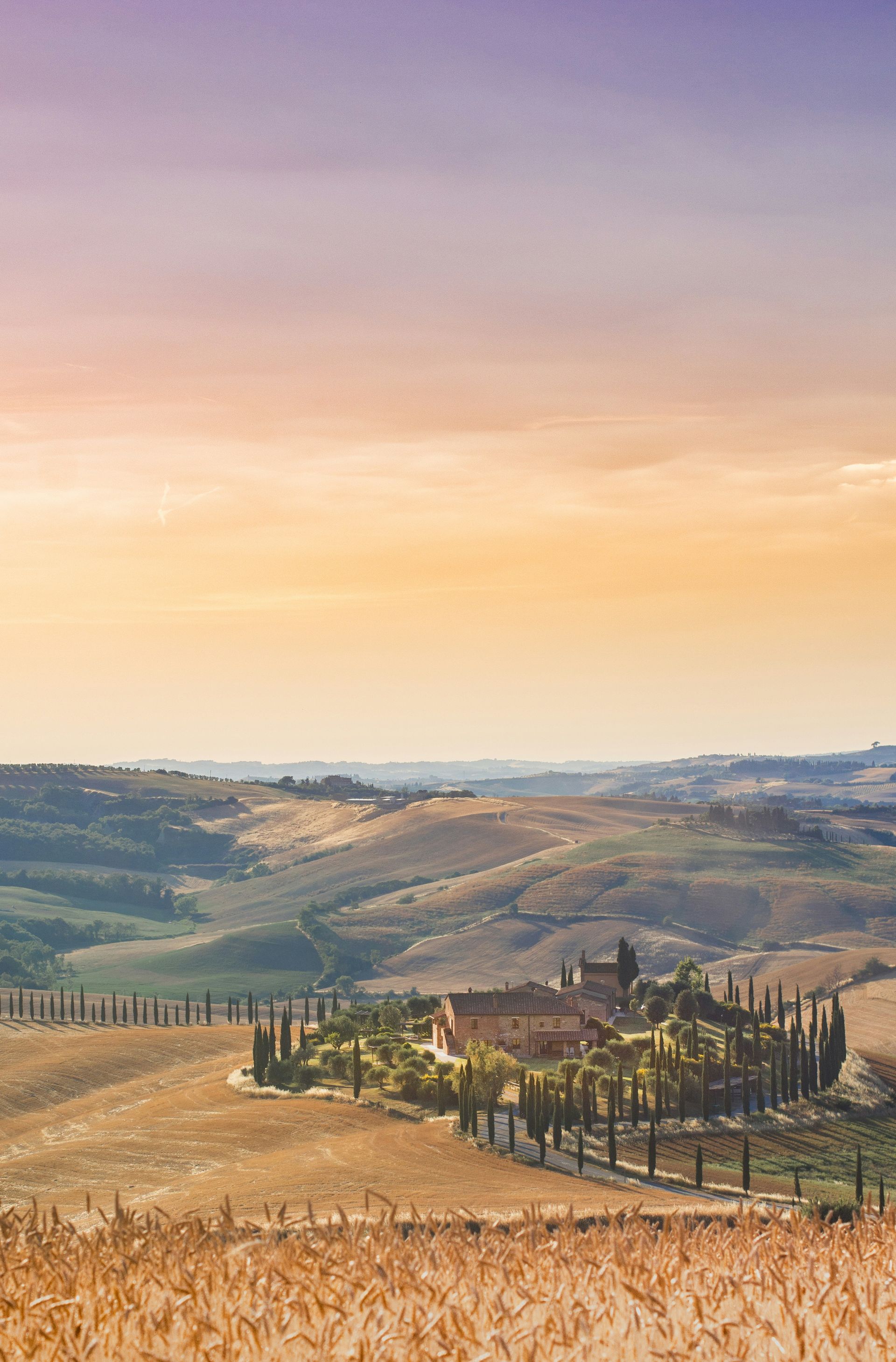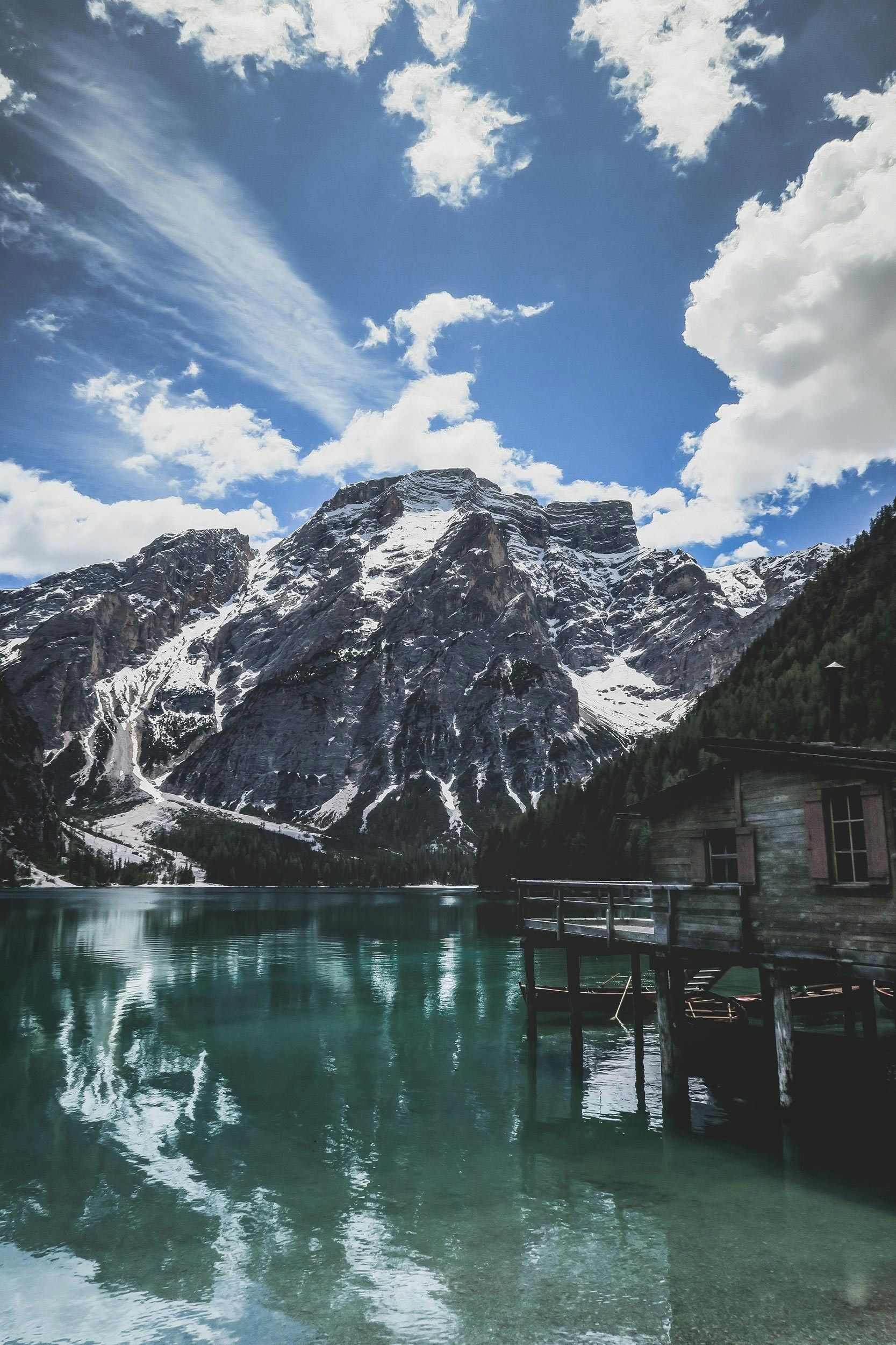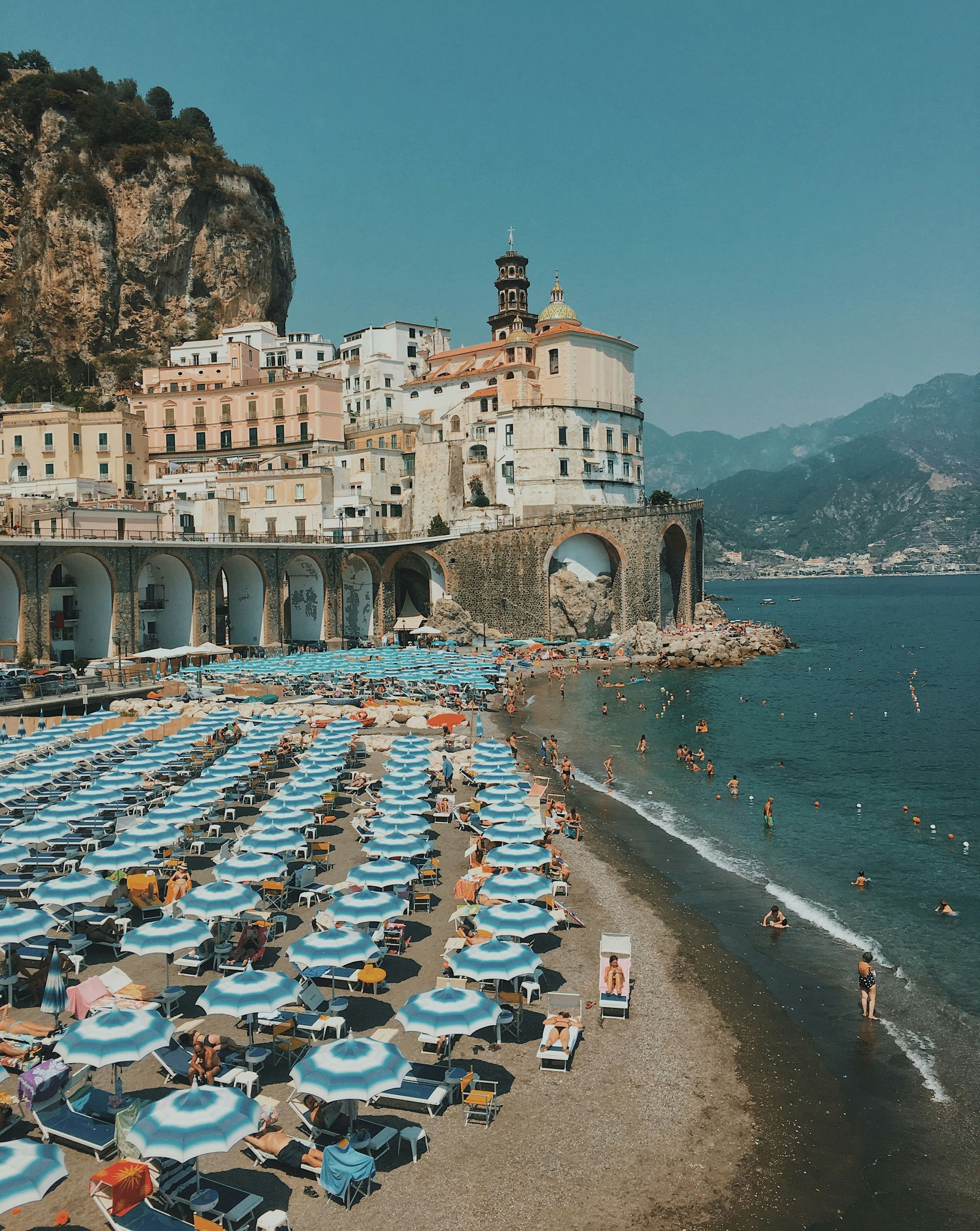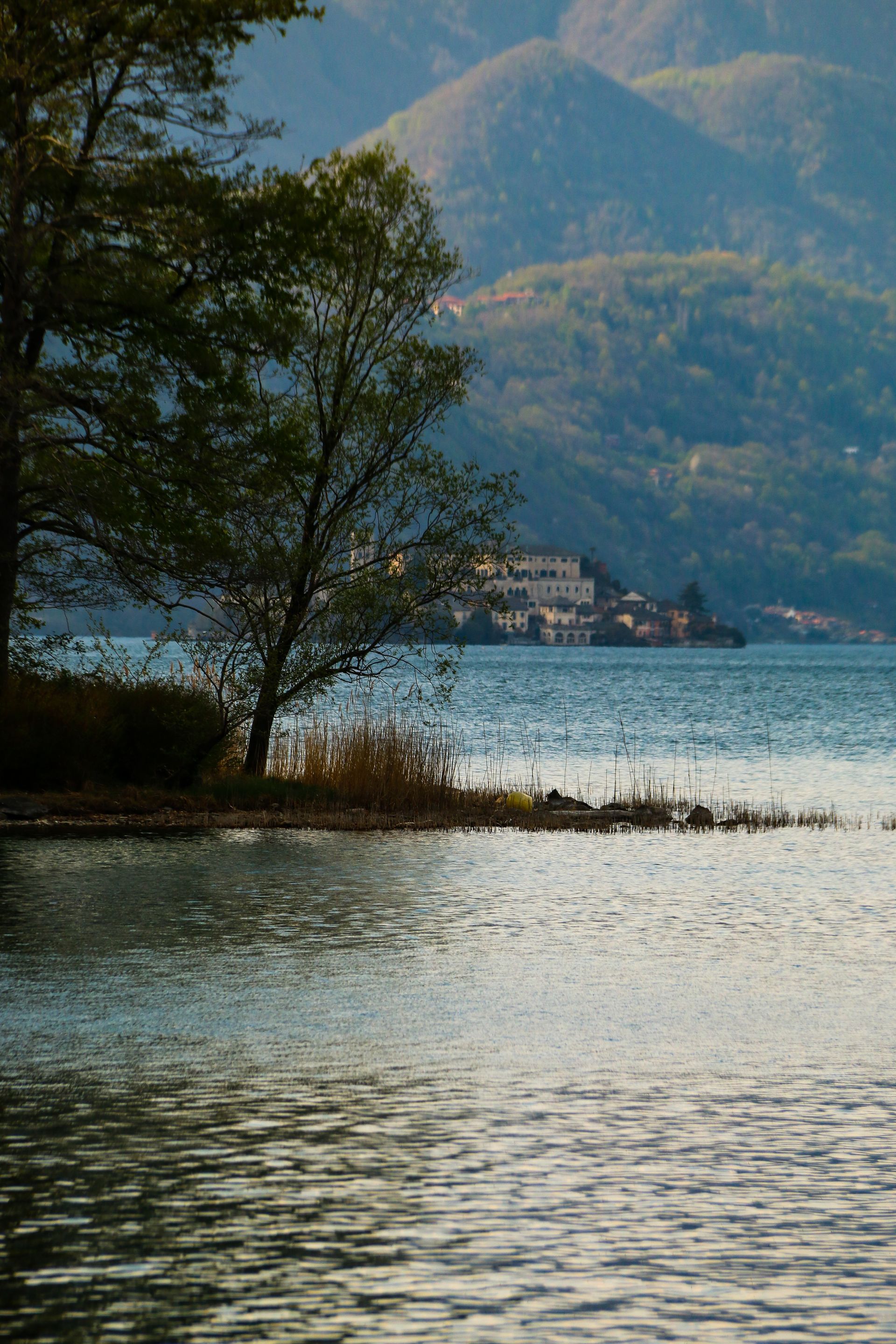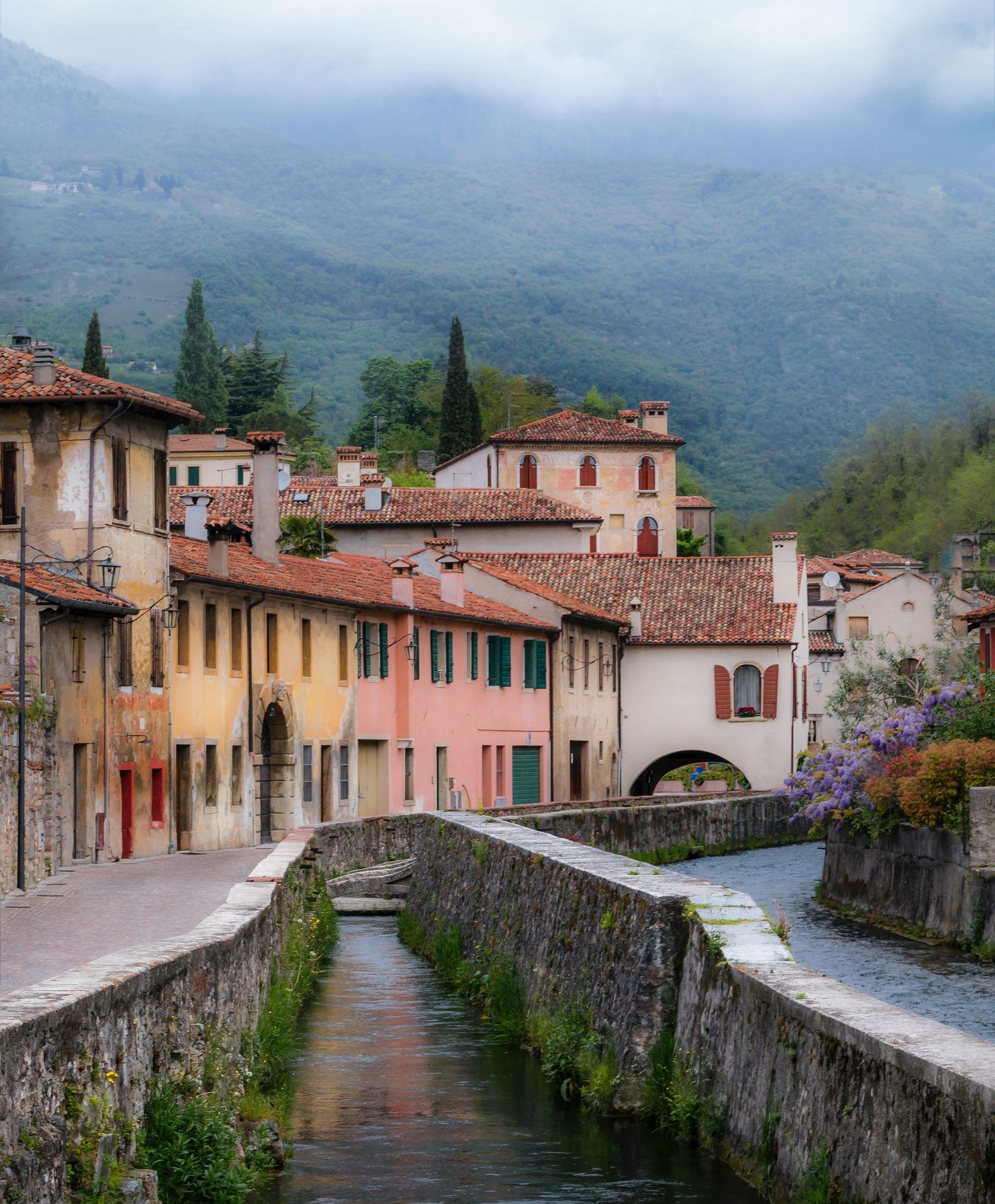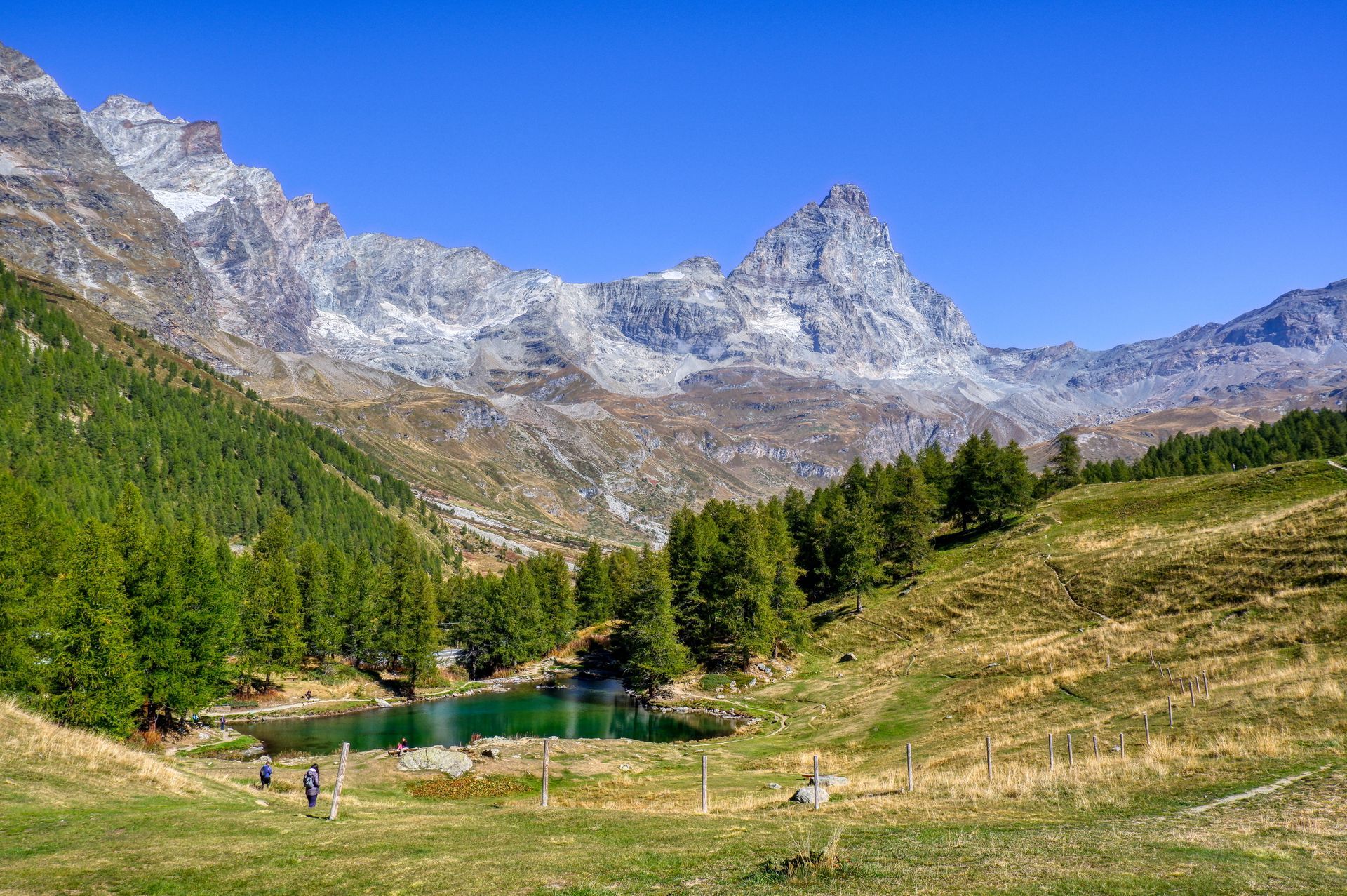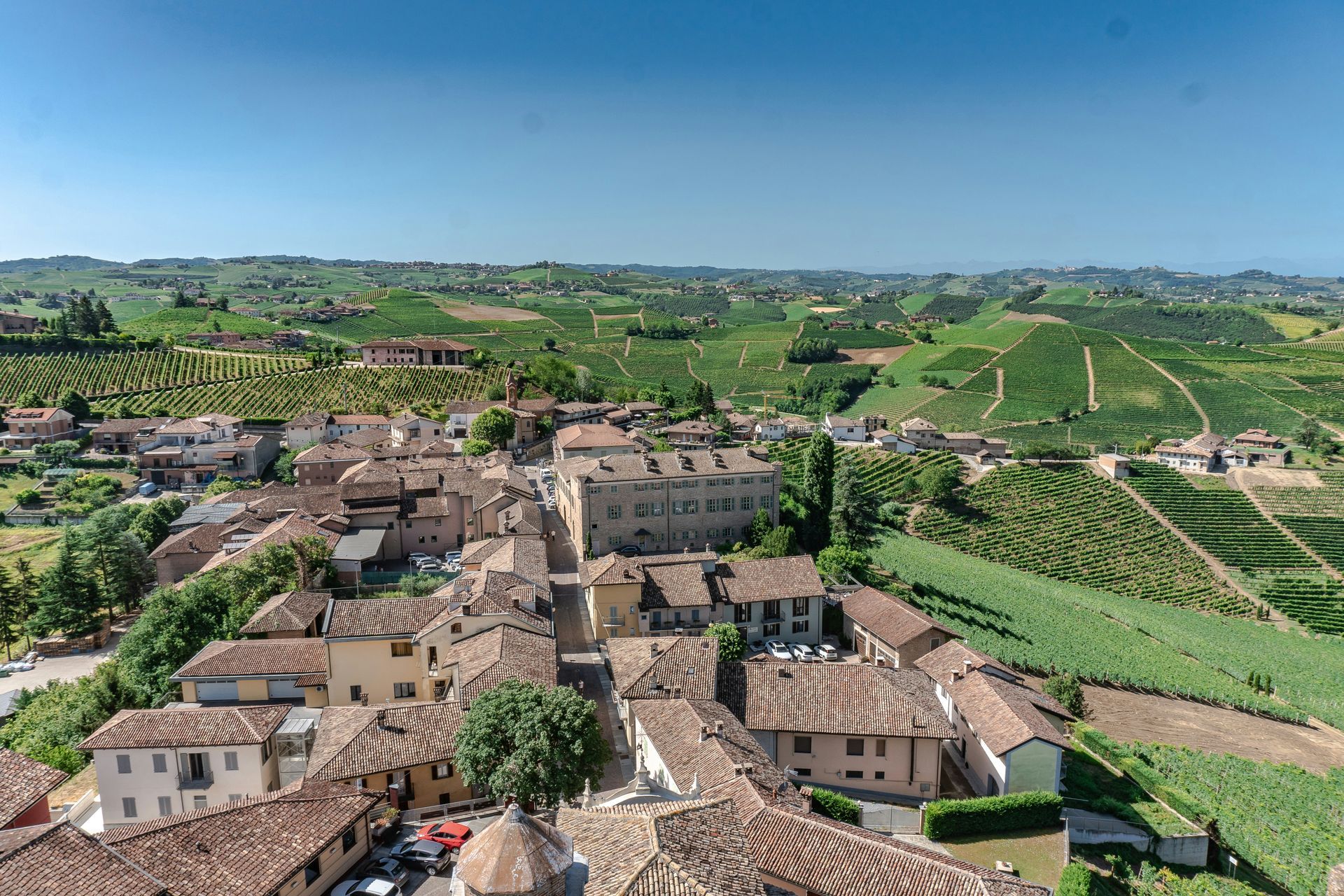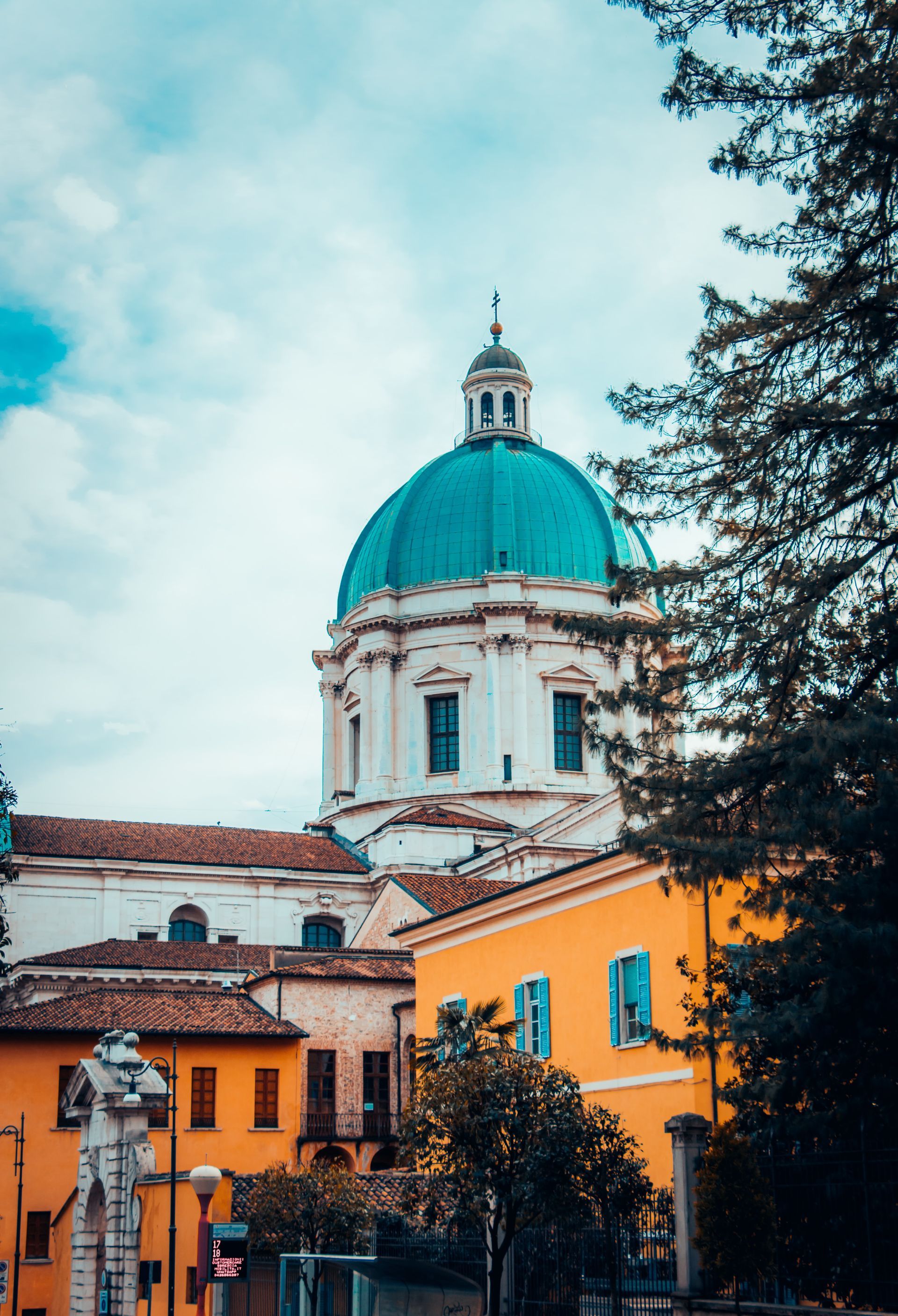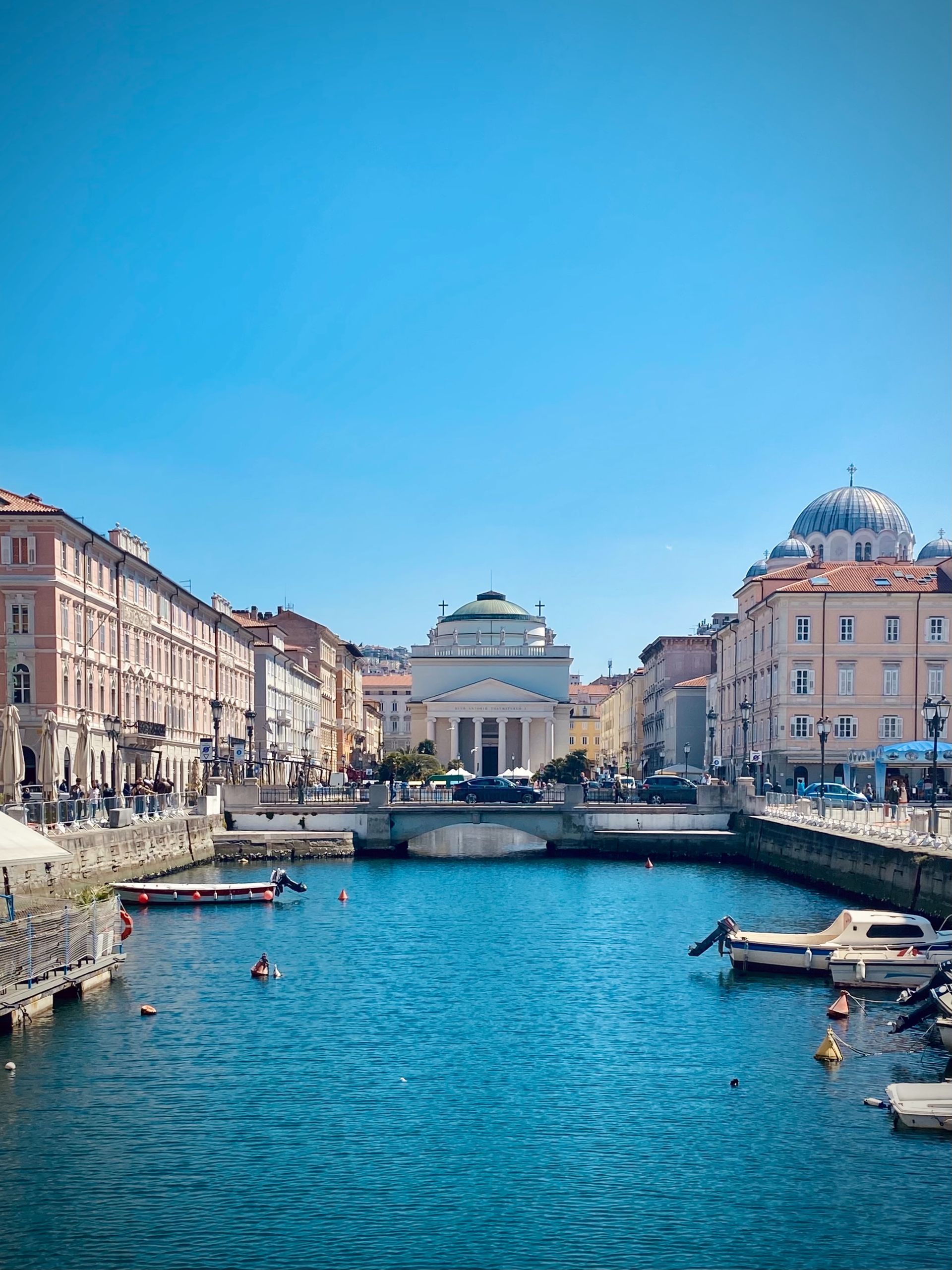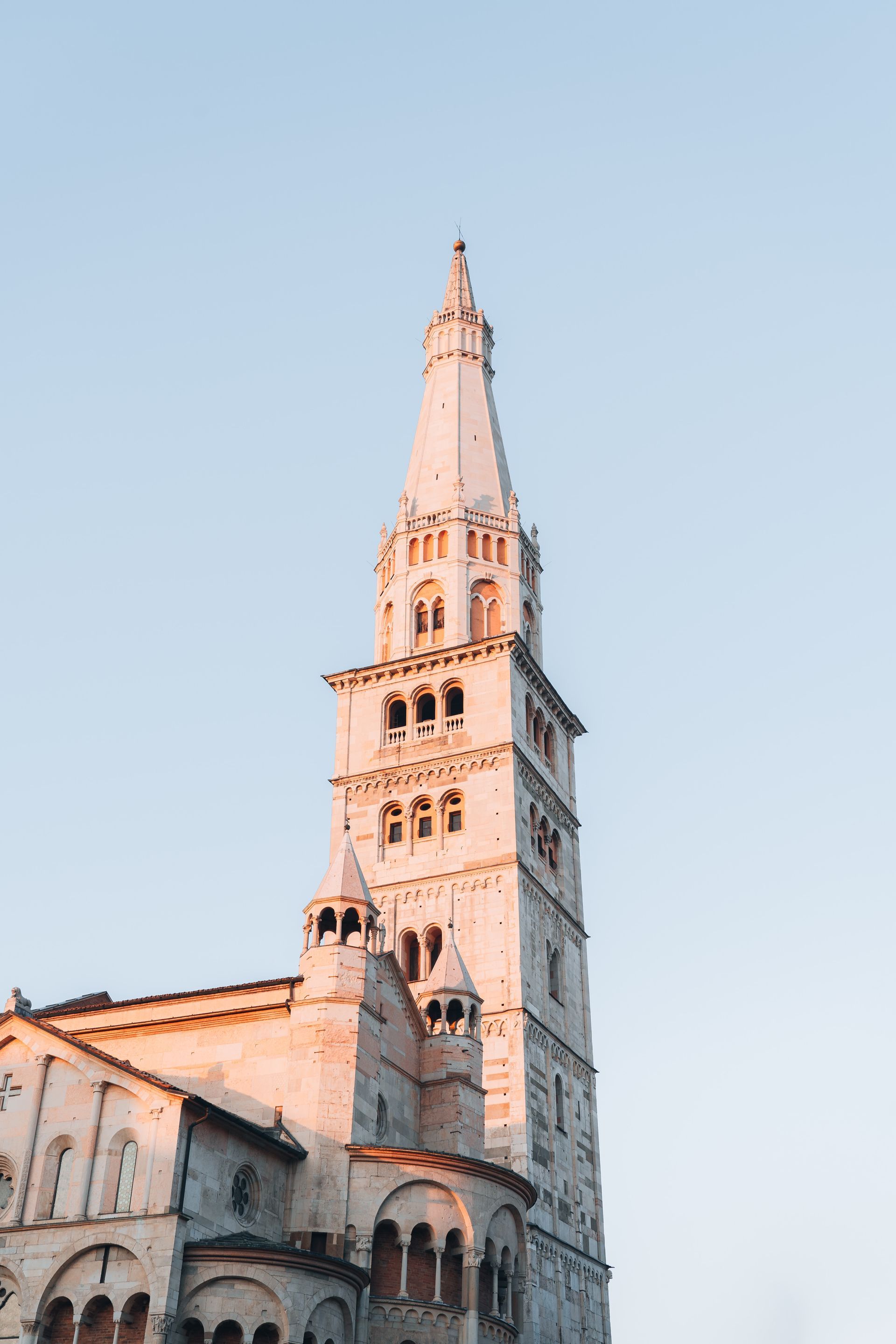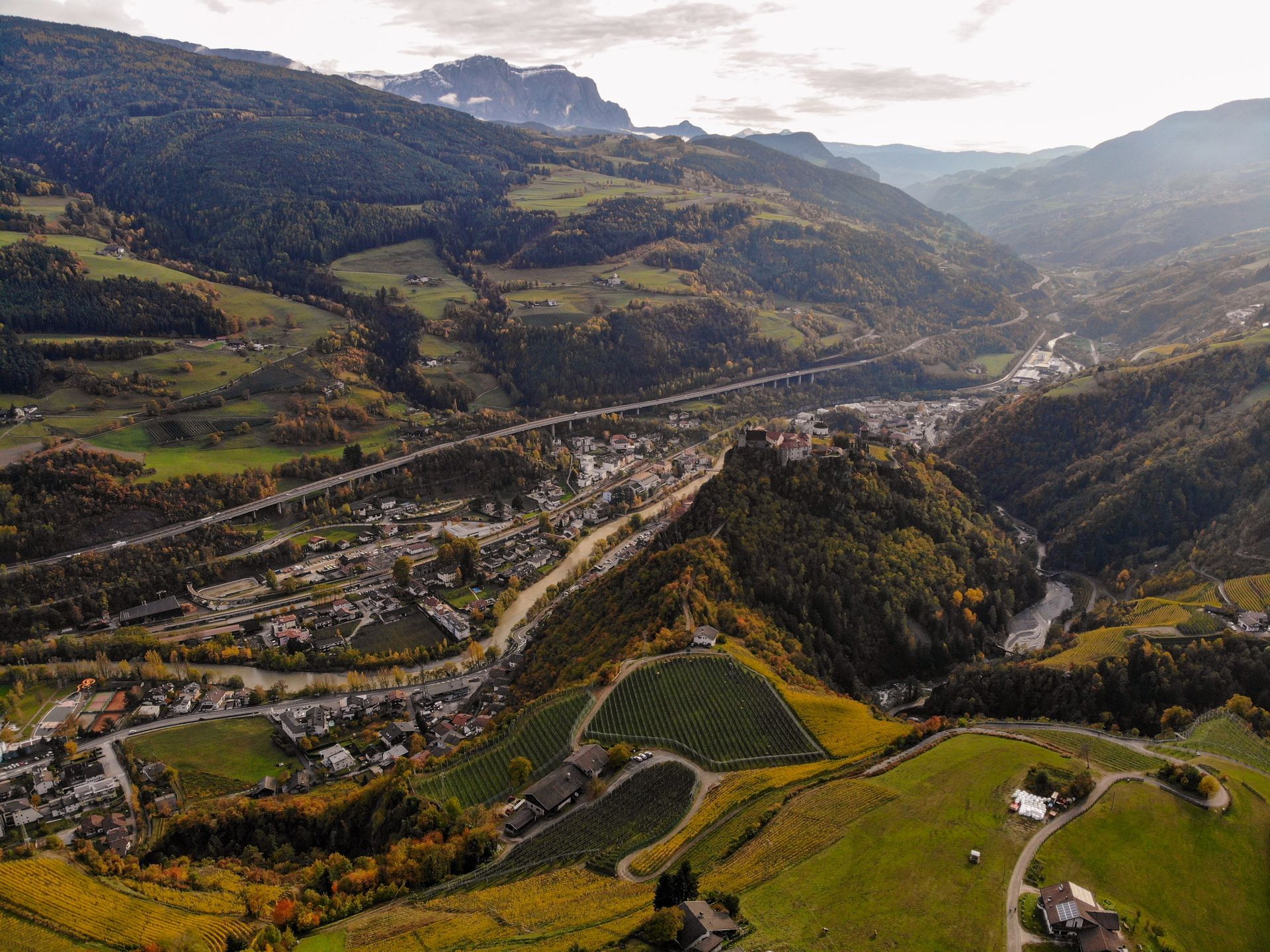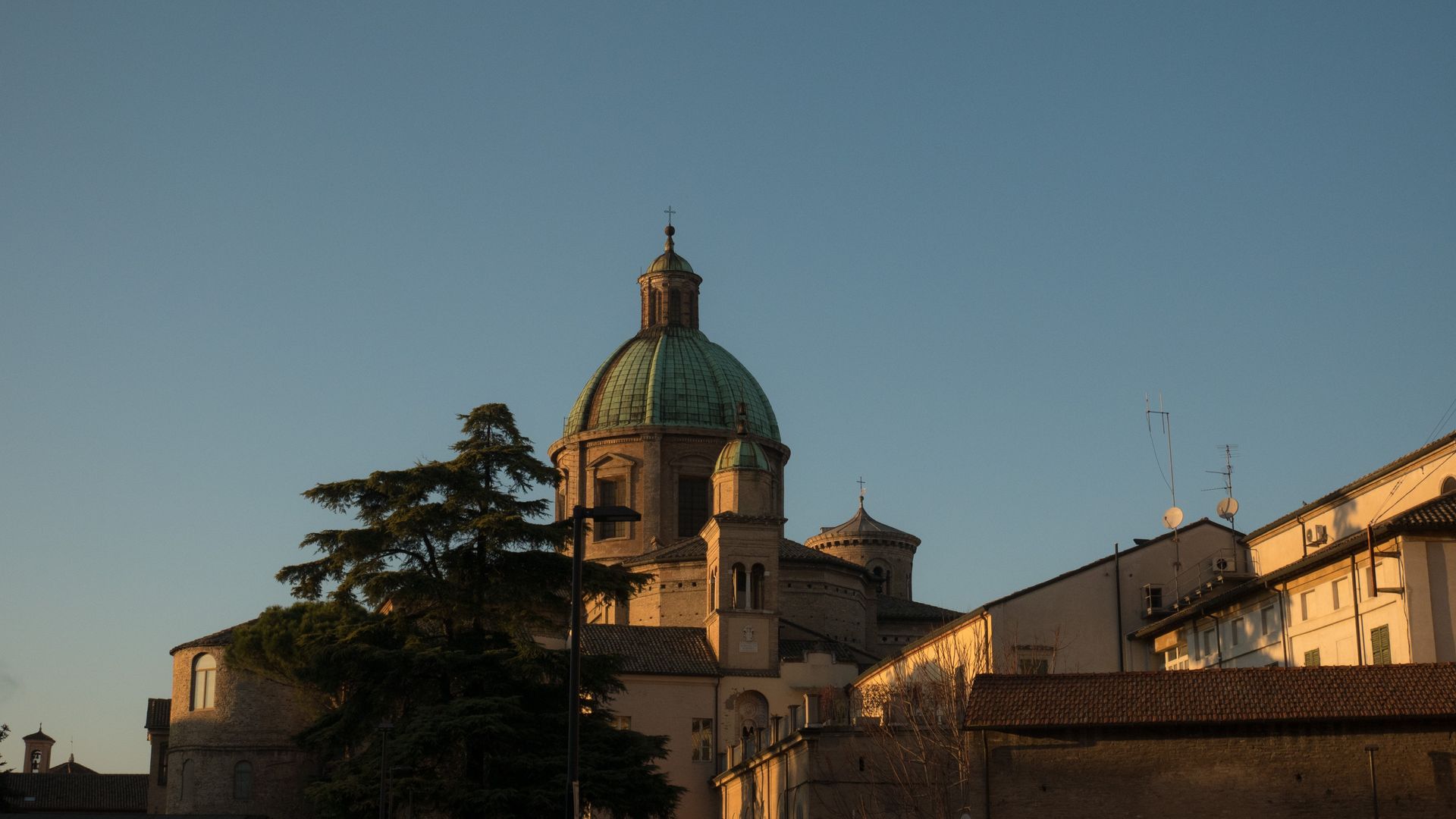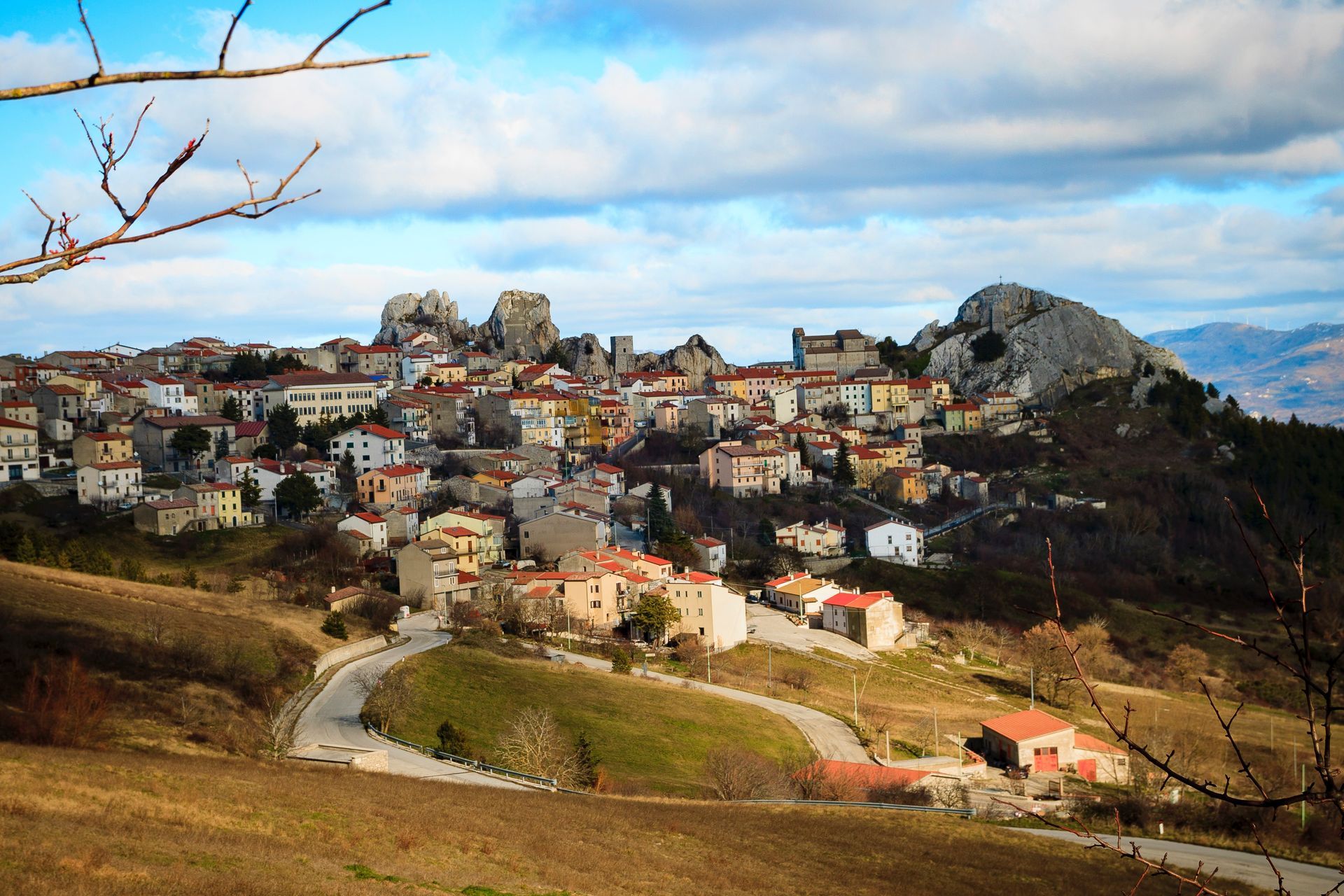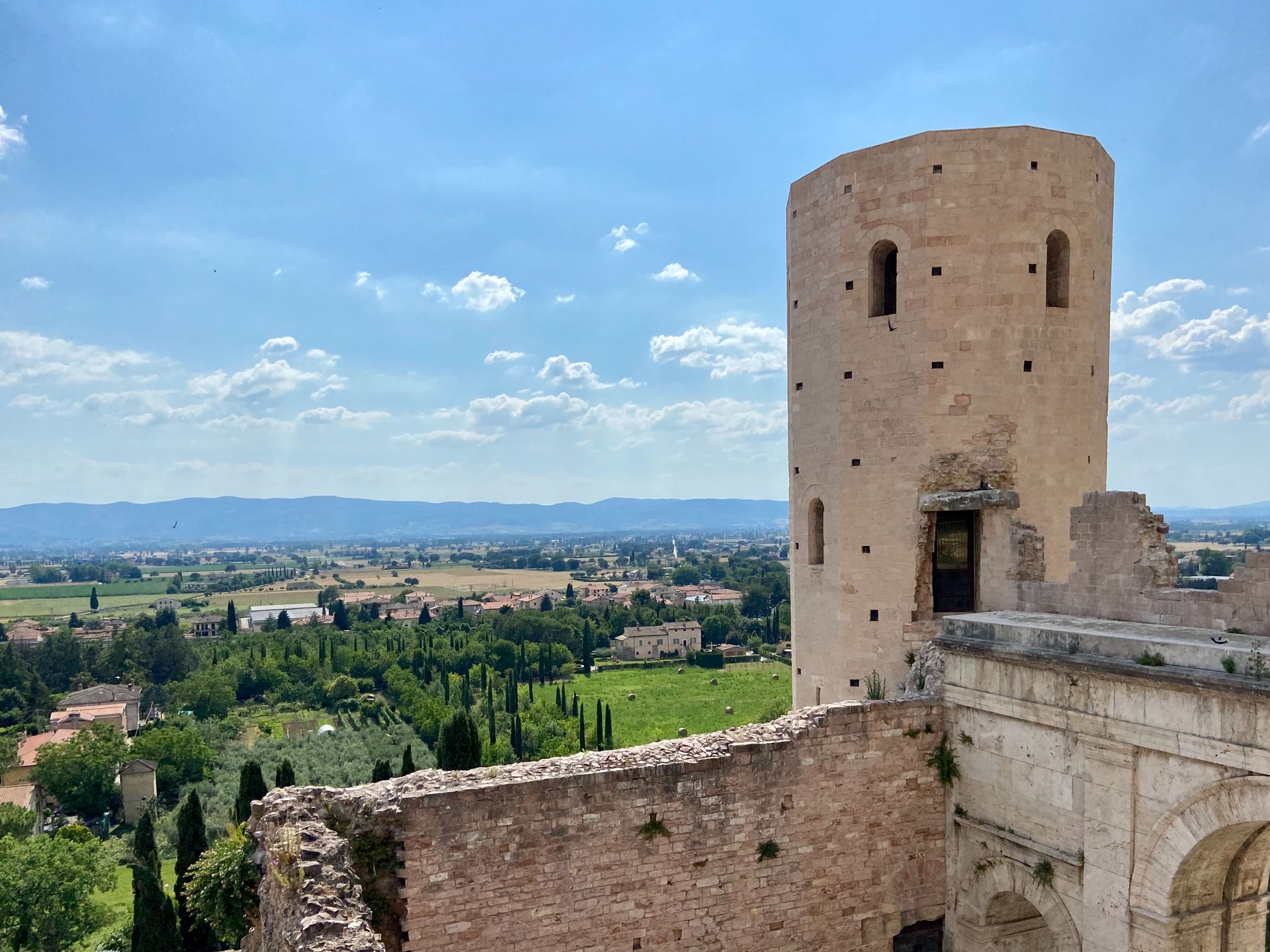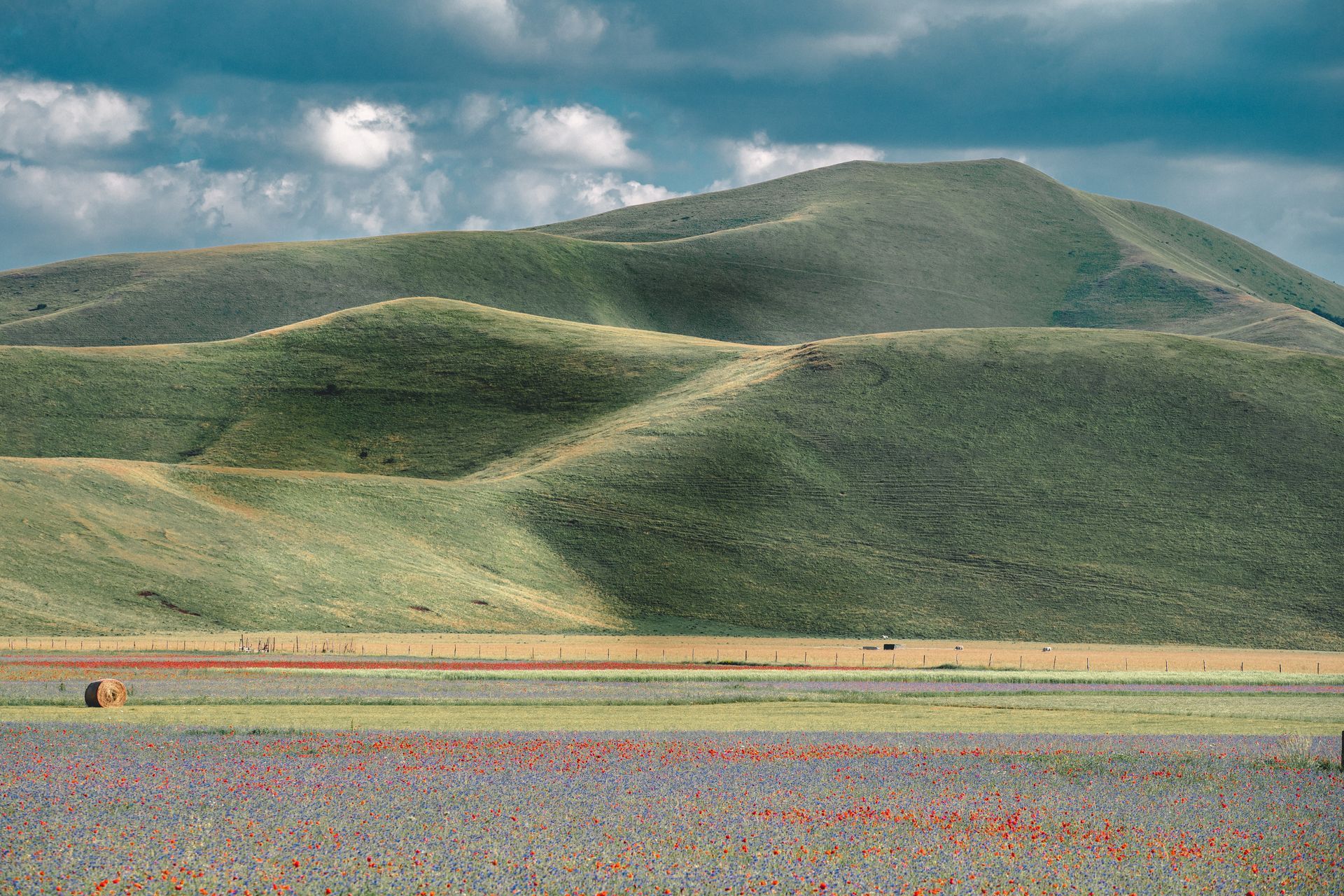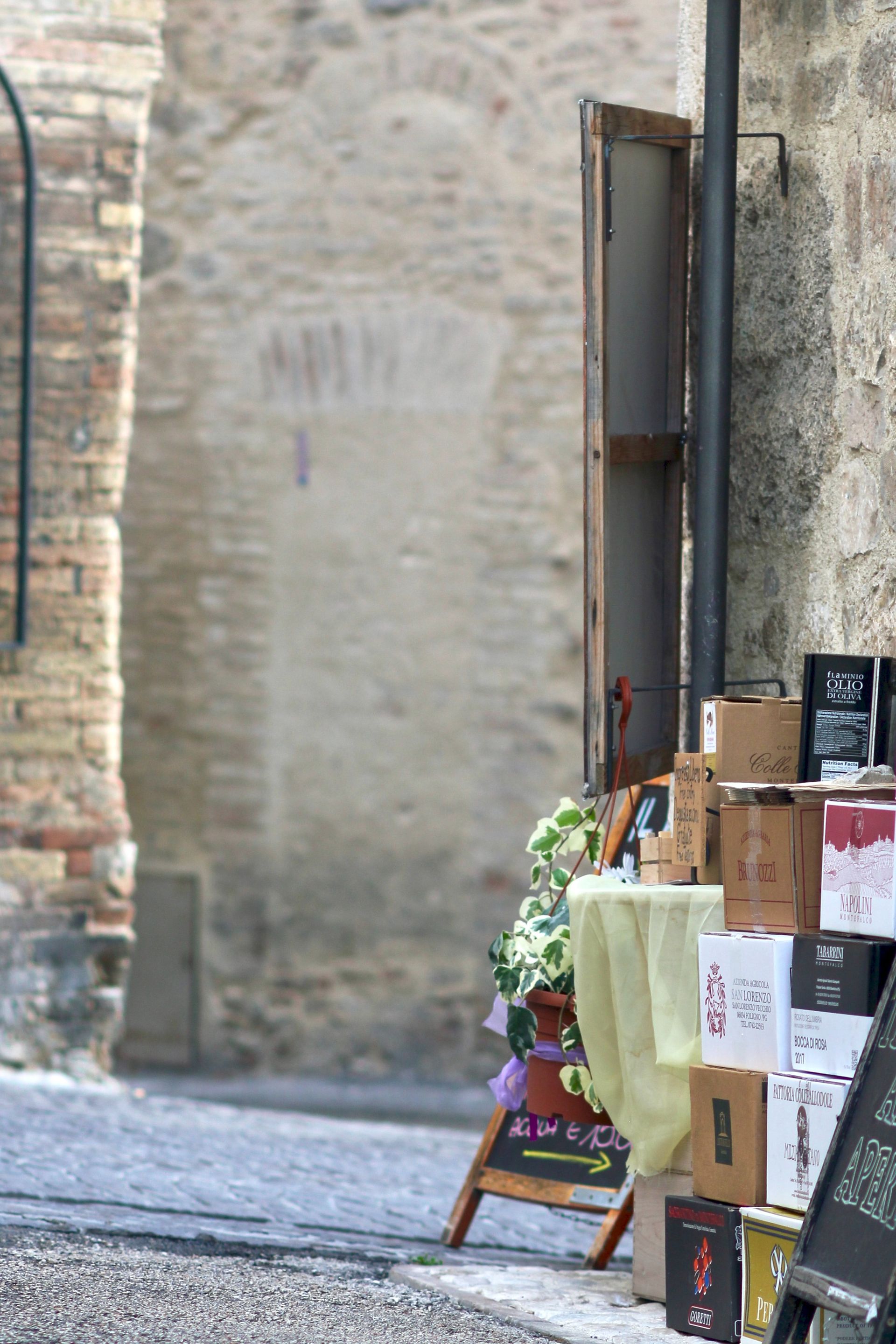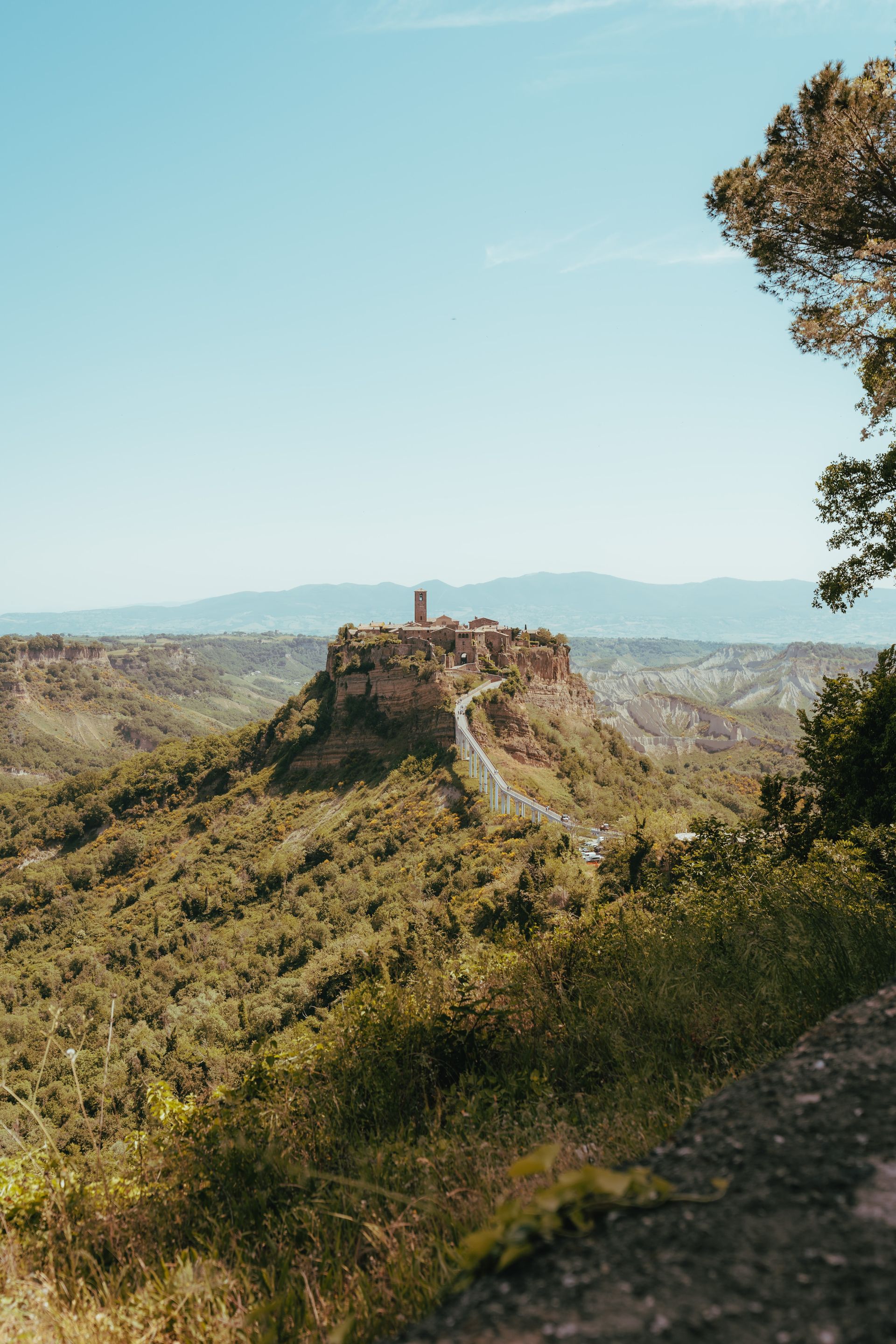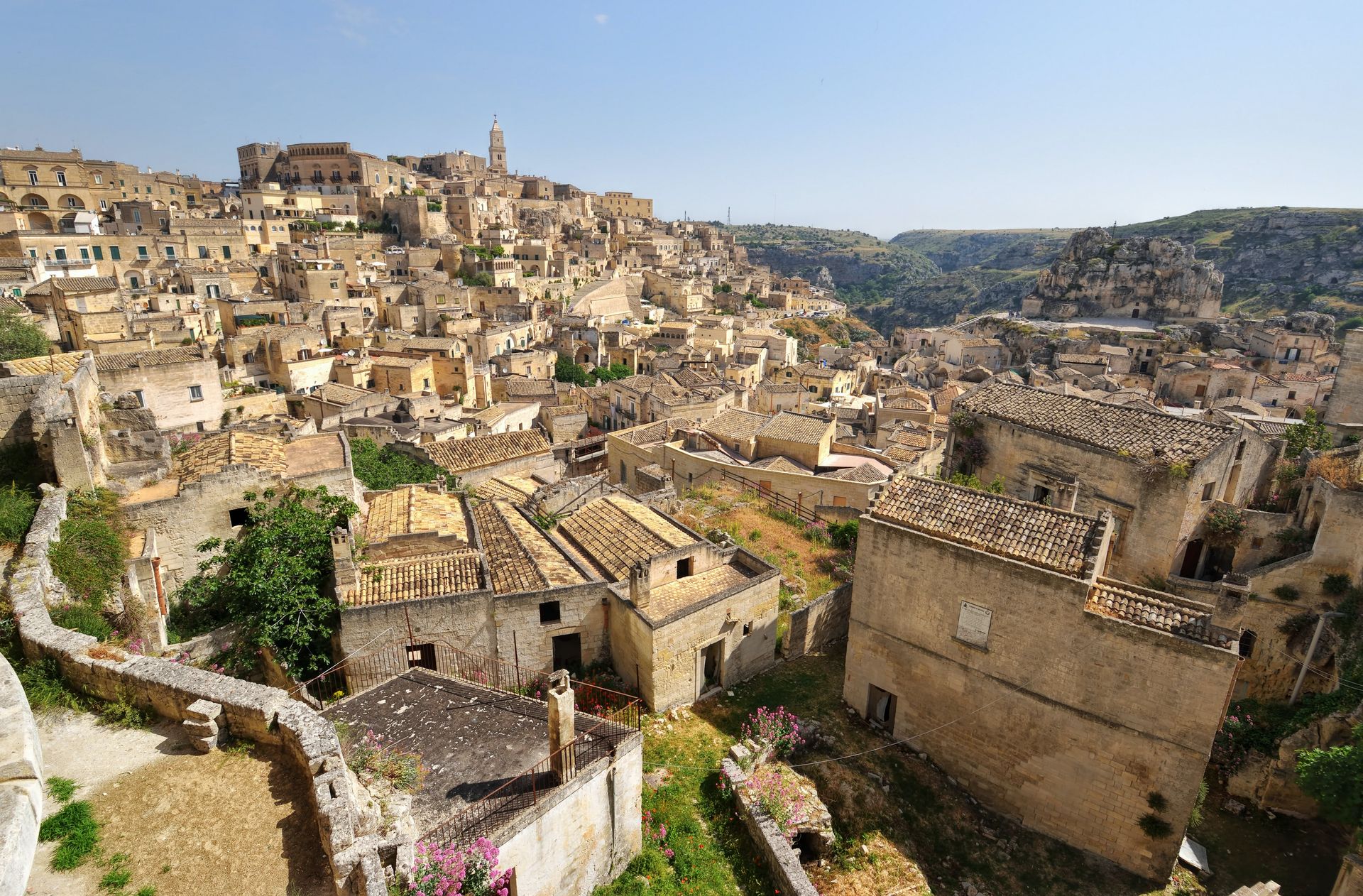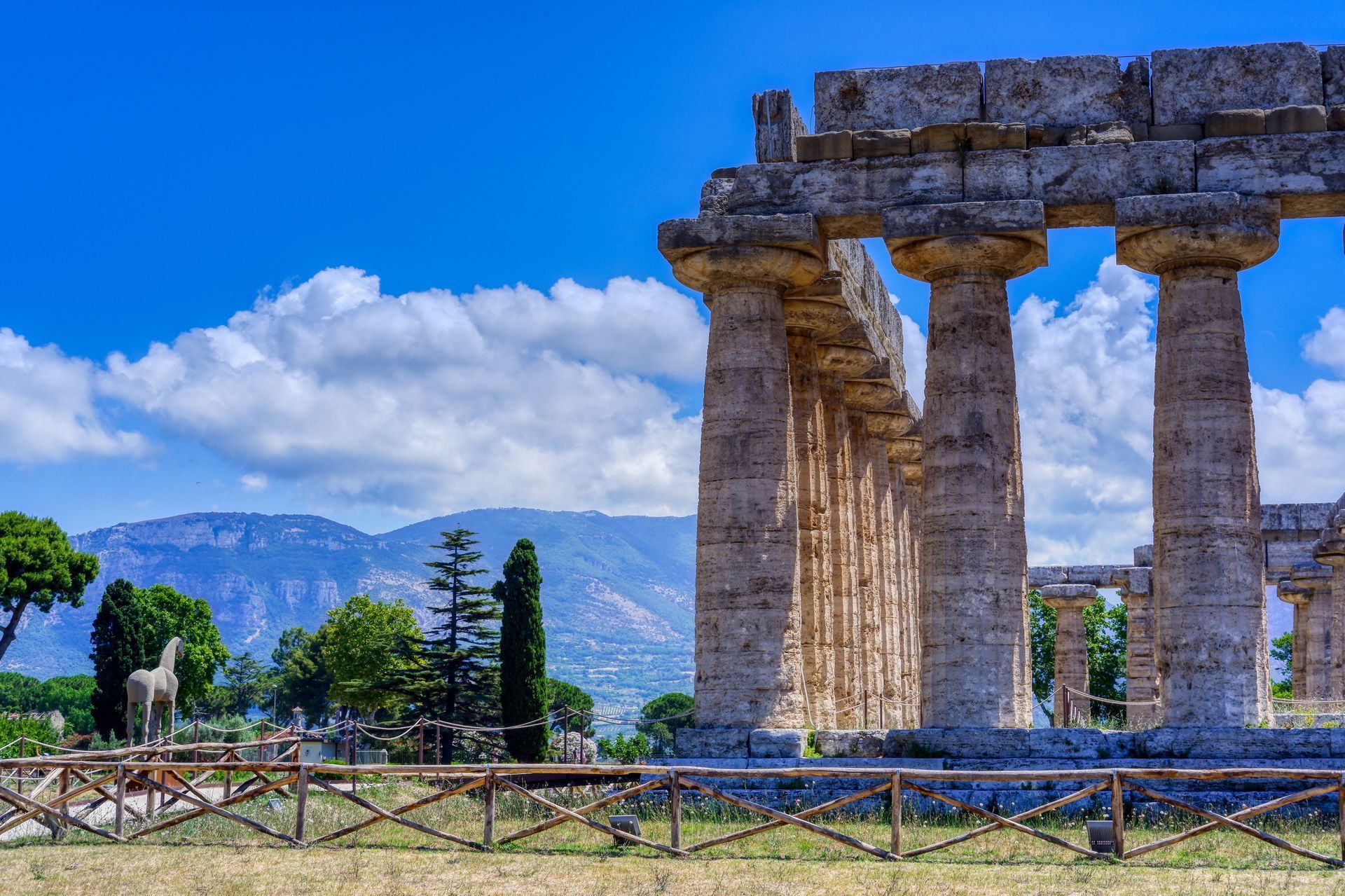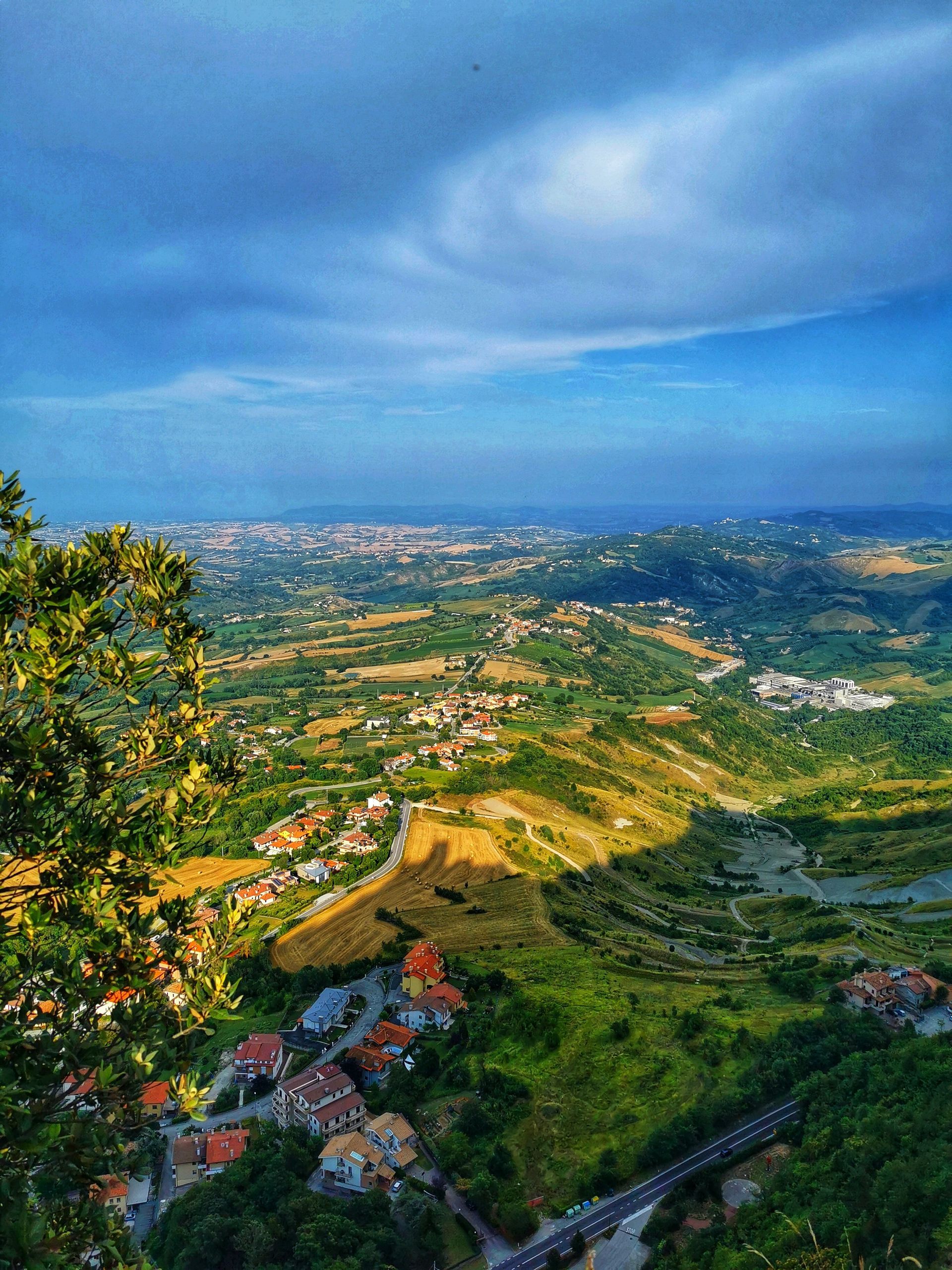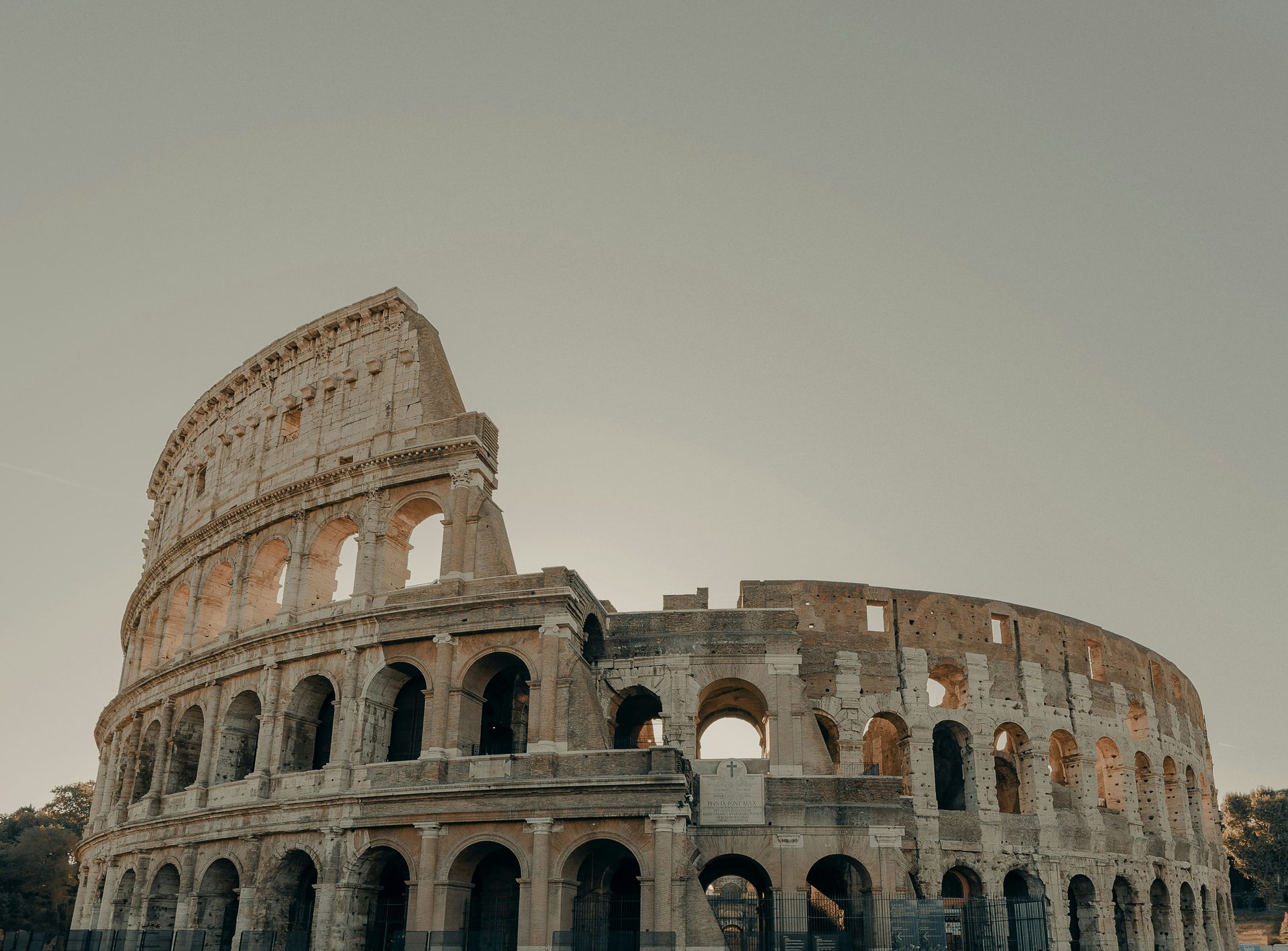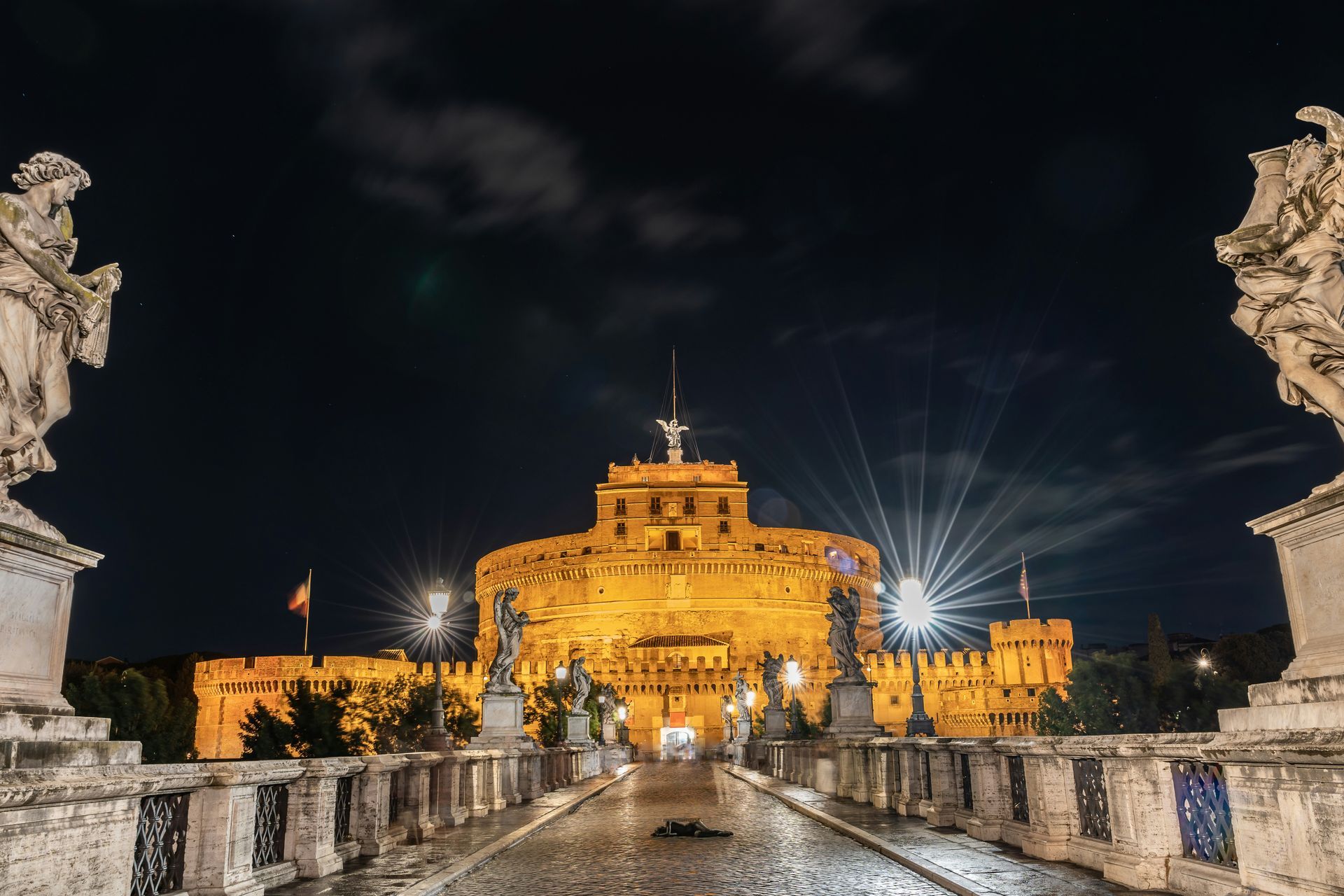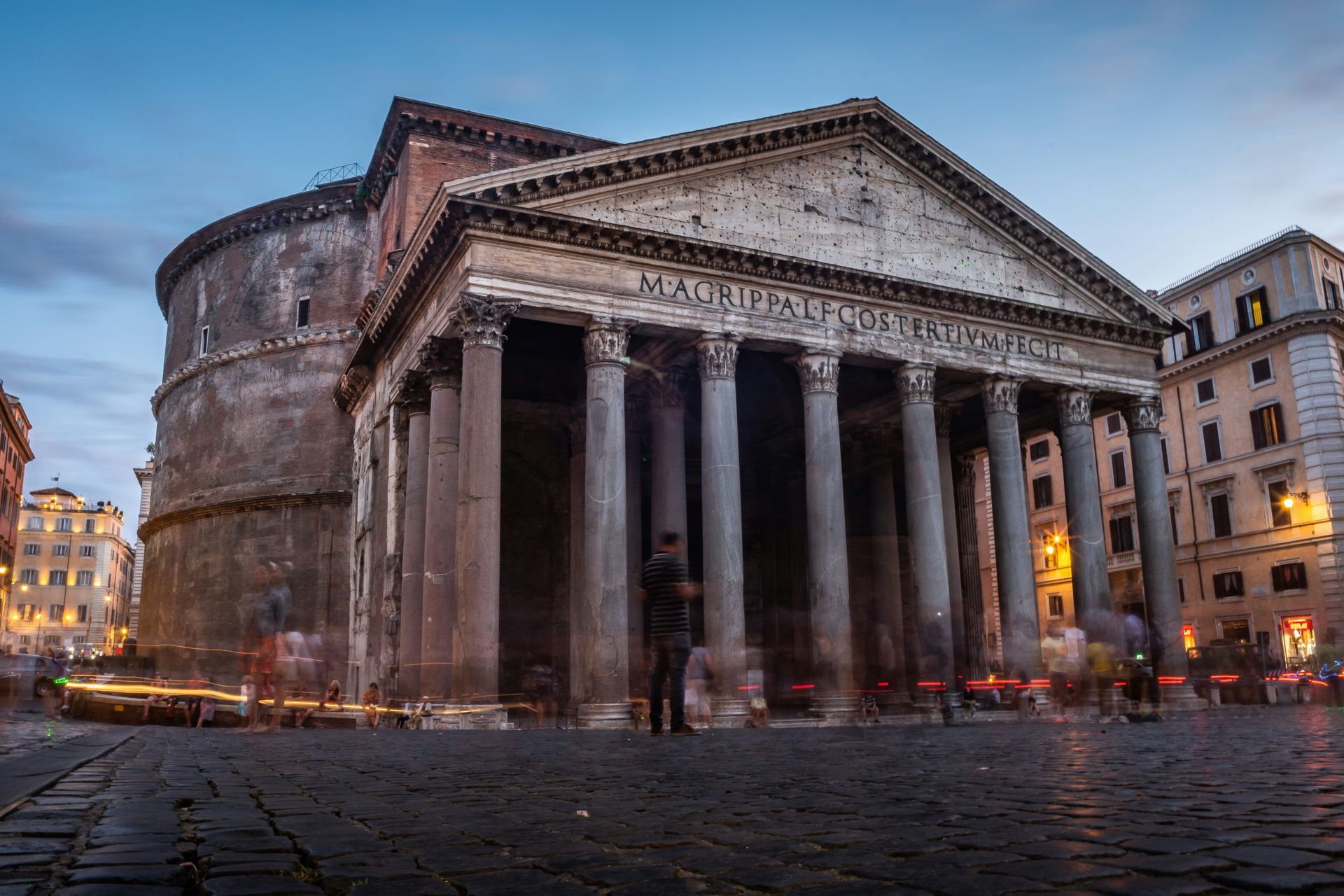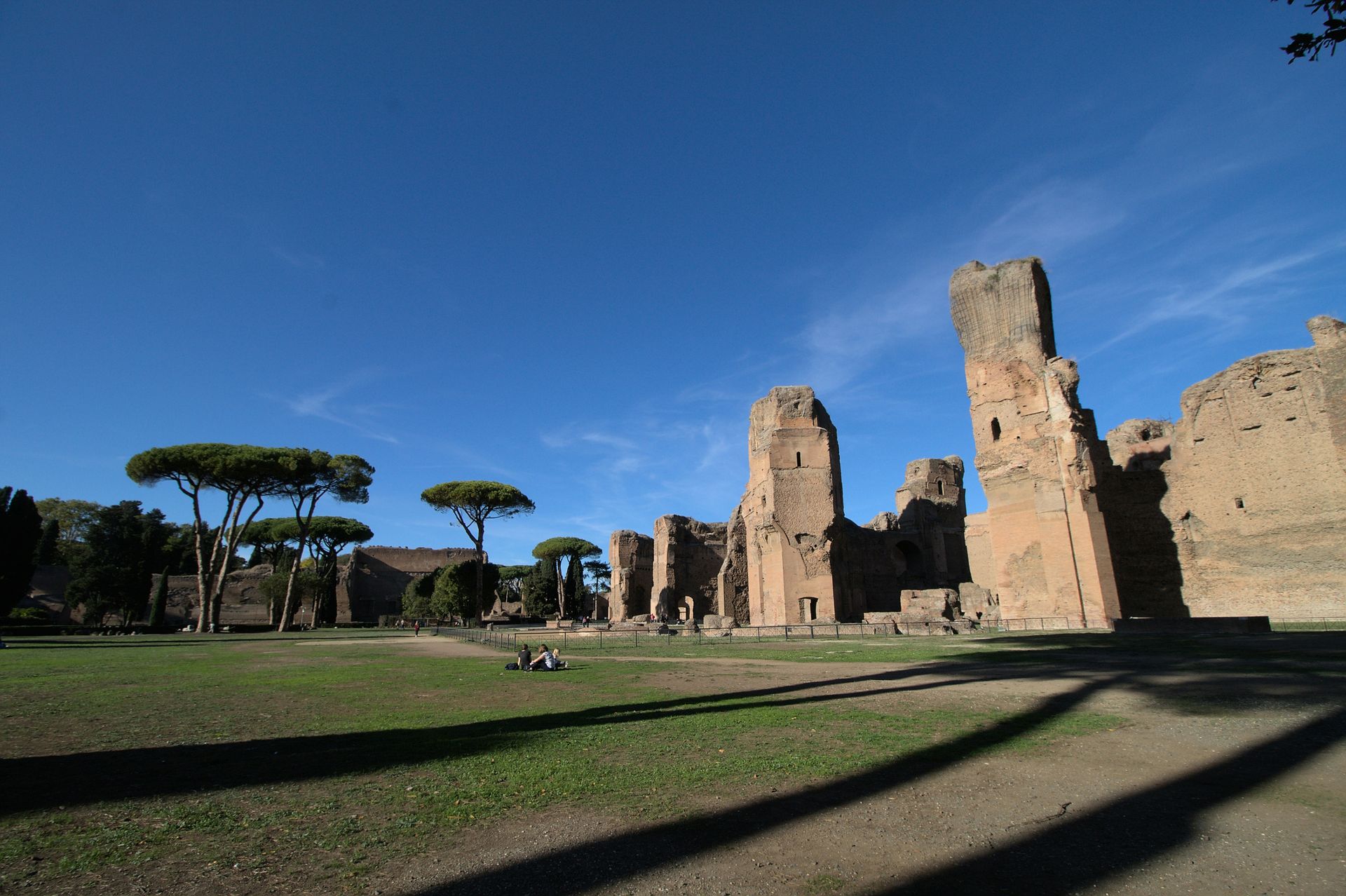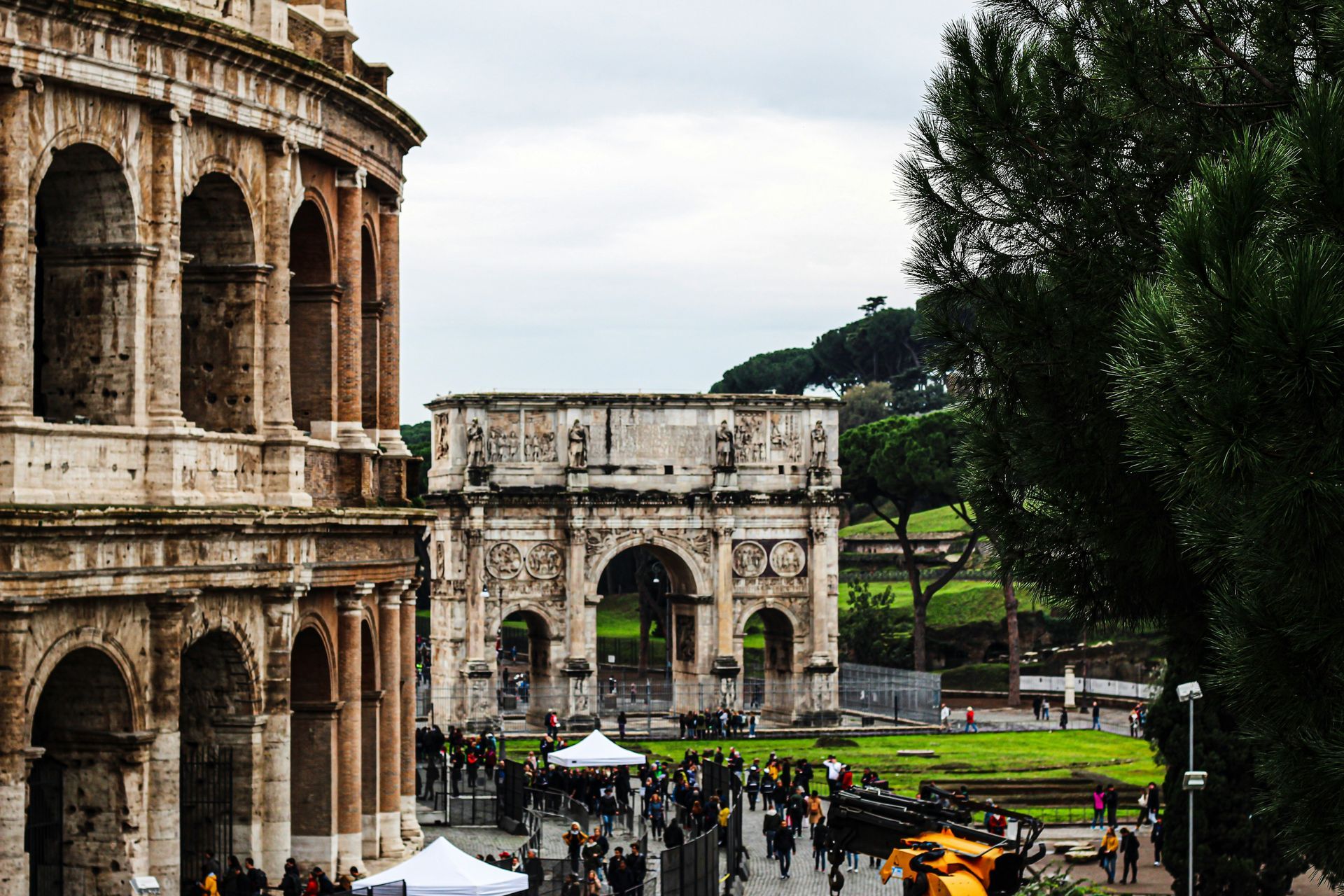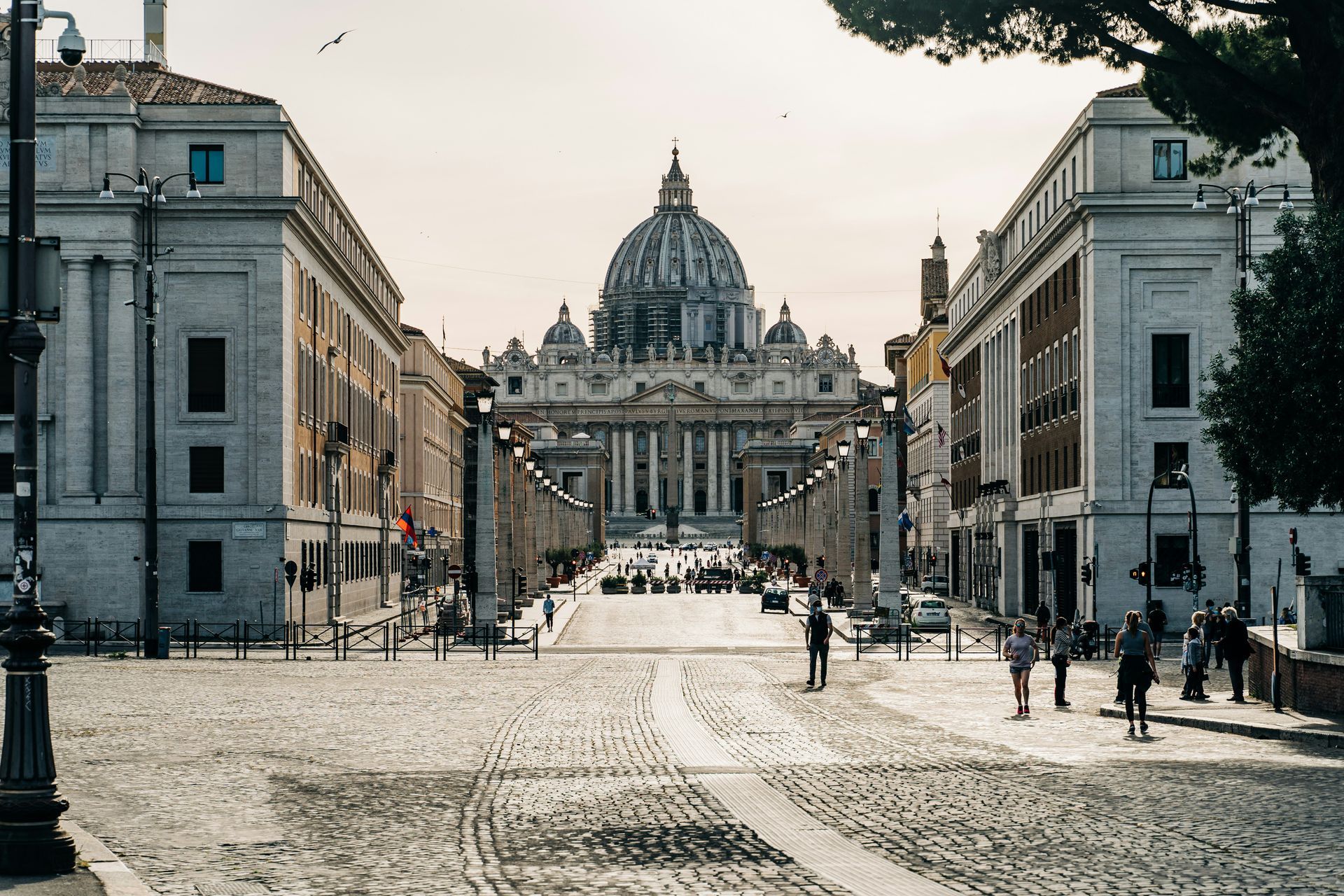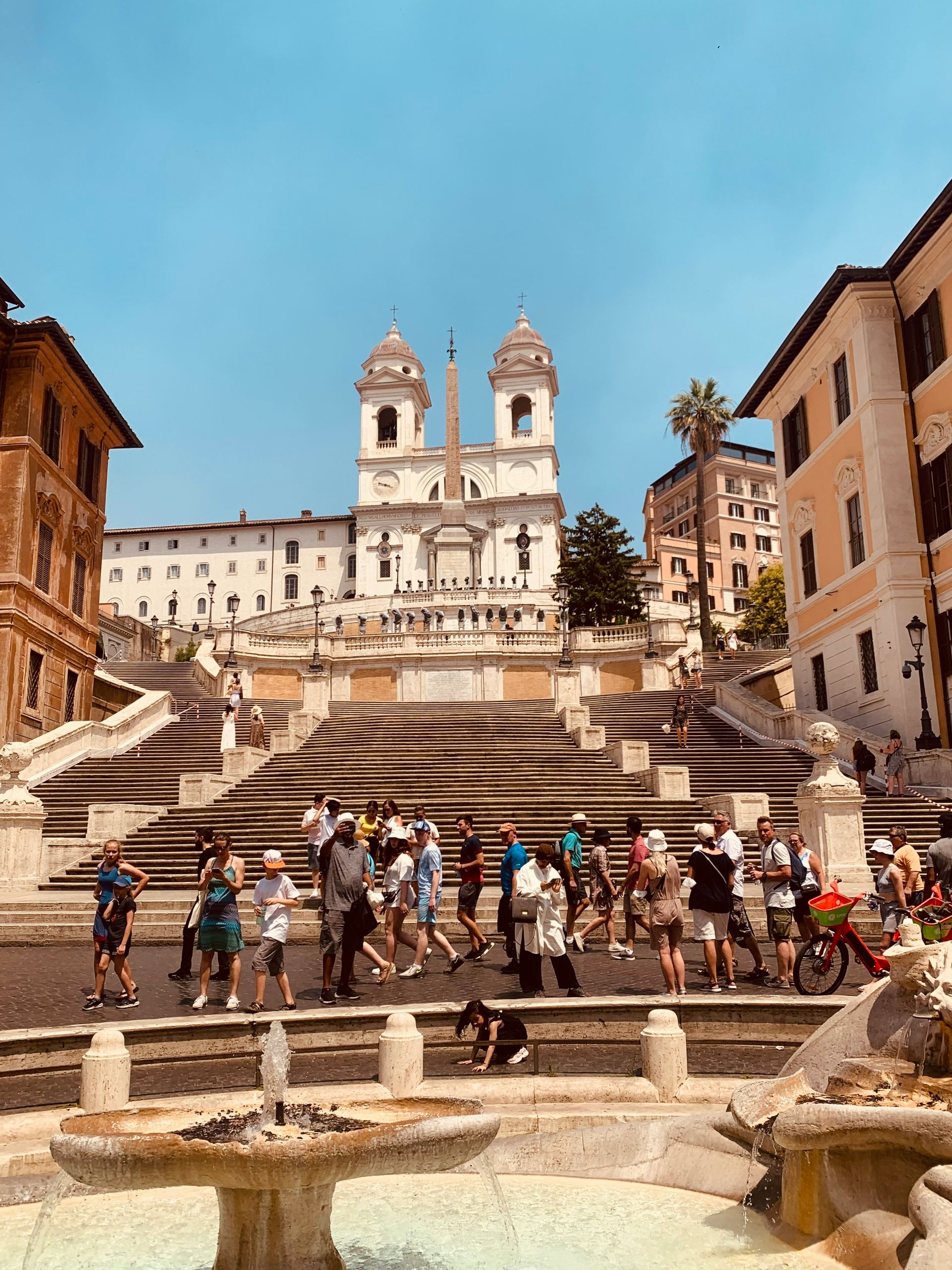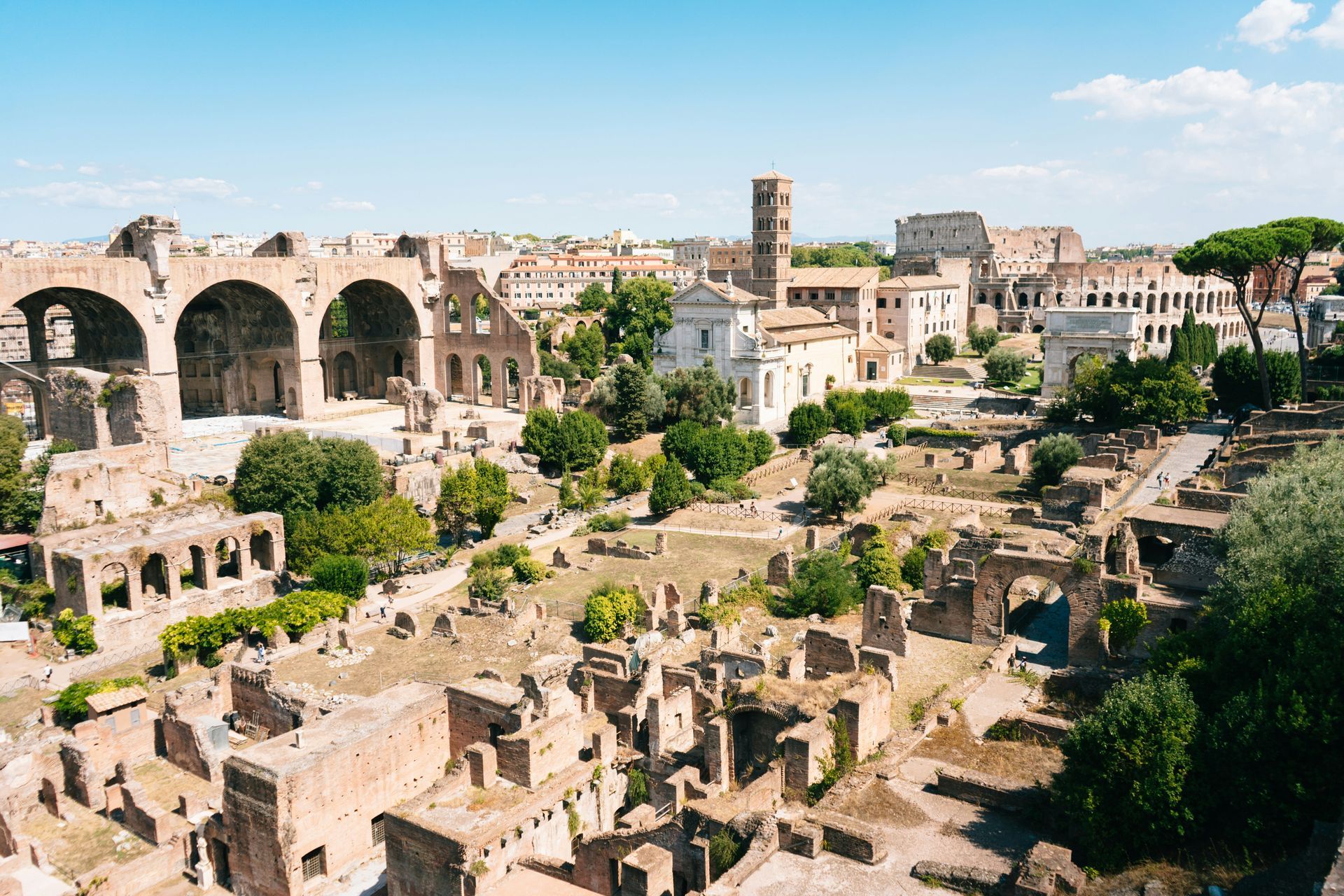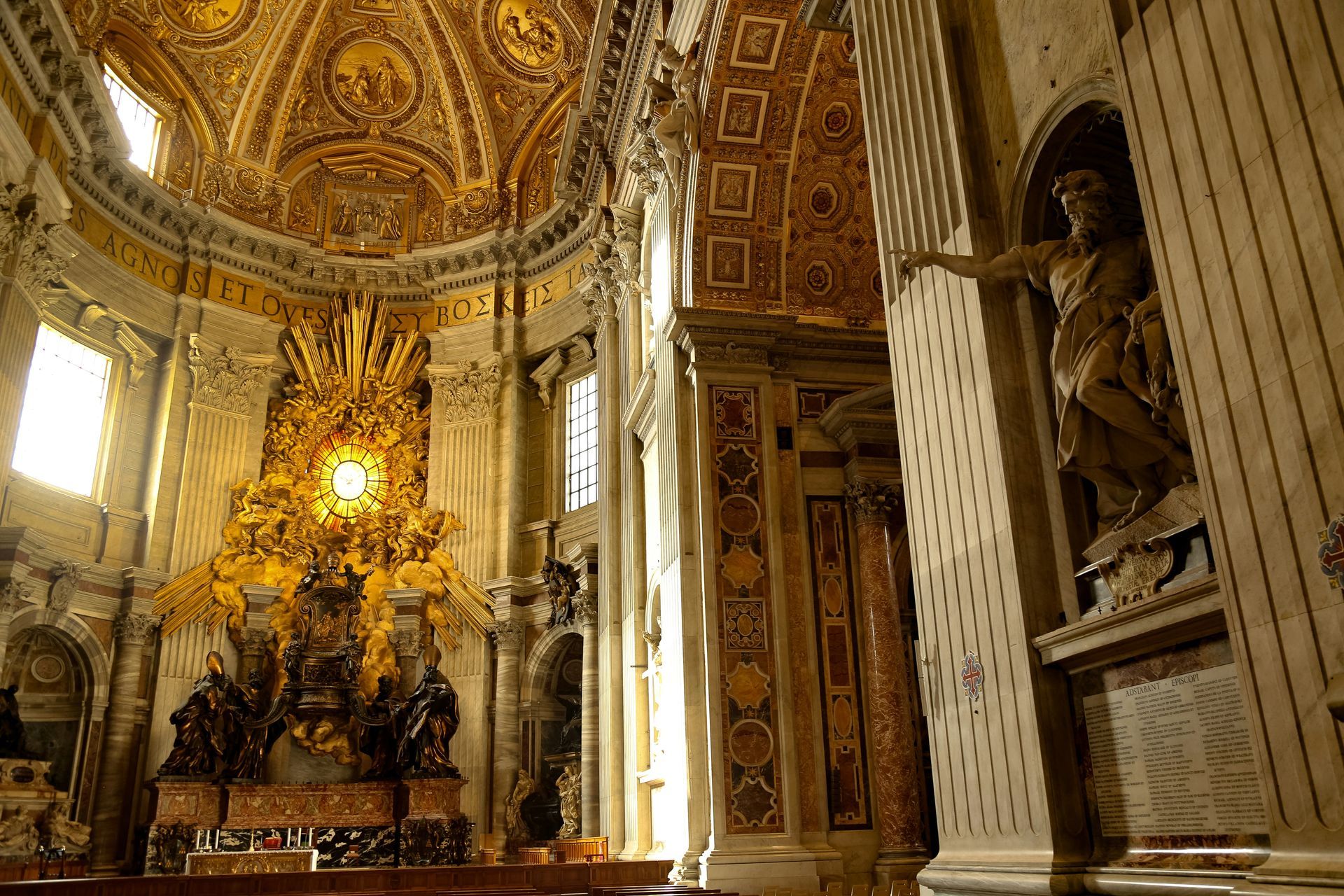Spreading Smile across the globe
Hidden Gems of Northern Italy
Hidden Gems of Italy are a testament to the country's diverse and enchanting beauty, often concealed from the traditional tourist routes. While Italy is celebrated for its iconic cities like Rome, Florence, Venice, and the Amalfi and Cinque Terre coasts, it's the lesser-known destinations that promise a unique journey. These unexplored regions offer travellers a chance to experience Italy's authentic culinary delights, rich historical narratives, and stunning natural landscapes. From the northern reaches to the southern shores, these Hidden Gems of Italy reveal a different facet of this remarkable nation.
Lake Orta - Piedmont
Hidden Gems of Italy come to life at Lake Orta, tucked away near the Swiss border in the heart of Piedmont. This hidden paradise often evades the spotlight compared to its more famous counterparts like Lake Como and Lake Garda. The historic town of Orta San Giulio, with its Baroque and Medieval architecture, cobbled streets, and idyllic Piazza Motta, enchants visitors. The glistening waters of the lake itself invite moments of serenity. What makes Lake Orta truly extraordinary is the mysterious island at its centre—a tranquil sanctuary inhabited by resident nuns.
Treviso - Veneto
Among the Hidden Gems of Italy, Treviso stands as a city in the Veneto region that retains its genuine northern Italian charm. Meandering through its narrow cobbled lanes, picturesque canals, and medieval city walls feels like a step back. Positioned on the fringes of the renowned Prosecco wine region, Treviso provides a delightful excuse for an aperitivo with a glass of Italy's renowned sparkling Prosecco.
Aosta Valley
Nestled among the bordering landscapes of Switzerland and France, the Aosta Valley showcases breathtaking alpine scenery, perched castles, and traditions that thrive throughout the year. When spring and summer arrive, the region's walking trails entice explorers. This season also brings lively festivals that celebrate folk traditions that date back to medieval times. Be sure to savour the local cheese Fontina, a culinary delight that embodies the spirit of this Hidden Gem of Italy.
Alba - Piedmont
Alba, a sought-after destination among Italy's hidden gems, is situated in the vineyards of the Langhe Hills. Once adorned with a hundred towers, Alba exudes a charming rural ambience. It's renowned for its autumn truffle festival, a gastronomic event that captures the essence of the region. Alba is also celebrated for its dark chocolate, hazelnut groves, white truffles, and prestigious wineries. It's from this very region that the sought-after Barolo wine originates.
Camogli - Liguria
Camogli, a typical and vibrant Italian seaside village on the Ligurian Riviera di Levante, perfectly embodies the spirit of the Hidden Gems of Italy. Towering, brightly painted houses dominate the town, and it has become a magnet for visitors seeking pristine beaches, Ligurian cuisine, the rustic fishing marina, Italian culture, and a tranquil natural setting. Camogli has earned its reputation for culinary excellence, focusing on fish and seafood, particularly anchovies and tuna, as well as the iconic pesto sauce made from basil and pine nuts.
Brescia - Lombardy
Hidden Gems of Italy often come alive through history, and Brescia is no exception. In this small city, history unfolds through a tapestry of architectural styles, spanning Roman, Medieval, Renaissance, Baroque, and even Art Deco. Walking through Brescia feels like a journey through time, and a visit to the captivating Piazza della Loggia, framed by a stunning Venetian-style palace at its heart, is a must for history enthusiasts.
Trieste
Trieste is a refreshingly unique destination, an Italian city positioned near the Slovenian border with its dialect that's a delightful blend of Austrian-German, Greek, Croatian, and Italian. Trieste's neoclassical waterfront is a sight to behold, with its marina brimming with stylish, glimmering yachts. The city's offerings include clear blue skies, expansive sandy beaches, city lidos, and the surrounding vineyards. Trieste is a Hidden Gem of Italy that belongs on every traveller's Northern Italian itinerary.
Modena - Emilia-Romagna
Modena is famed for its Hidden Gems of Italy, including balsamic vinegar, Luciano Pavarotti, the Romanesque cathedral, and the nearby Ferrari museum. Beyond these illustrious attractions, Modena reveals a treasure trove of remarkable restaurants. Massimo Bottura's Osteria Francescana has twice earned a place among the world's top 50 eateries, showcasing the culinary excellence of this Hidden Gem. While in Modena, don't miss the chance to savour local specialities like stuffed tortellini and sparkling Lambrusco wine, the perfect complement to your gastronomic journey.
Chiusa / Klausen - South Tyrol
Chiusa, also known as Klausen, is one of Italy's most picturesque villages. It is situated on the banks of the Isarco River in the South Tyrolean region near the Austrian border. Chestnut groves, green fields, vineyards, and farmsteads surround the town. In the village itself, visitors are captivated by narrow alleyways, coats of arms, large bay windows, crenellated facades, and the two main squares.
Ravenna - Emilia-Romagna
Ravenna offers a treasure trove of experiences among the Hidden Gems of Italy. This city is a feast for the senses, with its diverse offerings of food, music, art, culture, history, beaches, wine, and mosaics. Ravenna is home to eight UNESCO-listed sites, making it a must-visit for history and art enthusiasts. It's also known for its two-month-long music festival, Dante Alighieri's tomb, local culinary delights, nearby beach resorts, and the opportunity to explore pinewood forests. The city's fame is derived from its stunning mosaics, dating from the fifth and sixth centuries, scattered throughout the town.
In conclusion, Italy's Hidden Gems invite you to embark on a journey less travelled, where the rich tapestry of history, diverse cuisine, and breathtaking landscapes come to life. These lesser-known destinations provide an authentic Italian experience, away from the bustling crowds, revealing the nation's soul in its purest form. Explore these Hidden Gems to uncover Italy's hidden treasures.
Hidden Gems of Central Italy
Hidden Gems of Italy beckon the adventurous traveller to explore the lesser-known treasures that this remarkable country holds. From the picturesque valleys of Tuscany to the medieval charm of Umbria, the mysterious landscapes of Molise, and the architectural wonders of San Gimignano, these destinations promise unforgettable experiences.
Garfagnana - Tuscany
The Garfagnana region is a hidden gem in the beautiful Tuscan valley north of Lucca. It is crossed by the Serchio River, and the landscape is characterized by fertile greenery, rugged mountains, and charming villages. Outdoor activities such as hiking, walking, and mountain biking are enjoyed by many people in this area. Garfagnana is home to several one-of-a-kind attractions, including a ghost town, a wind cave, and the Devil's Bridge at Borgo a Mozzano.
Gubbio - Umbria
Umbria hides many treasures, and a particular favourite among Hidden Gems of Italy is the Medieval hilltop town of Gubbio. Gubbio, a city with a history dating back over 2,000 years, is a maze of cobbled streets and stone buildings that have been perfectly preserved. Visitors can take a cable car to the summit of Mount Ingino to enjoy panoramic views of the surrounding area. In addition, Gubbio hosts Italy's oldest event, the Corsa dei Ceri, in which teams race through the streets carrying massive wooden candles.
Molise
Molise is Italy's second-smallest region and one of its best-kept secrets. Hidden Gems of Italy are plentiful here. The picturesque town of Agnone is renowned for its artisanal bells, produced by the oldest family-run bell foundry in the world. Meanwhile, Campobasso, the regional capital, boasts a stunning medieval old town. Molise offers a captivating mix of historical charm and natural beauty, with rugged mountains, rolling hills, and pristine beaches along the Adriatic coast.
San Gimignano - Tuscany
Nestled in the heart of Tuscany, San Gimignano boasts medieval architecture and, of course, its famous towers. The town's historic centre is a UNESCO World Heritage site, known for its fourteen stone towers that once symbolised wealth and power. San Gimignano offers a glimpse into medieval Tuscany, with well-preserved streets and squares that transport visitors to another time. Besides the towers, make sure to explore the Collegiate Church and indulge in the local Vernaccia wine, a crisp white wine produced in the region.
Spello - Umbria
Another gem in the heart of Italy, Spello enchants visitors with its winding medieval streets and stunning floral displays. Known as the "Città Infiorata" or "flower town," Spello hosts the Infiorata festival, during which the streets are carpeted with intricate flower petal designs. This event occurs in early June and is a magnificent spectacle. Outside of the festival, Spello's charm continues with its well-preserved historic centre and beautiful churches.
Trulli of Alberobello - Apulia
Apulia, or Puglia, is famous for its unique trulli houses, and Alberobello is the epicentre of this architectural marvel. These whitewashed conical homes are a UNESCO World Heritage Site that offers a glimpse into the region's history. Visitors can even stay in trulli that have been converted into accommodations, providing a truly immersive experience.
Norcia - Umbria
Nestled in the Sibillini Mountains, Norcia is renowned for its gastronomy. This charming town produces exceptional cured meats, particularly prosciutto and salami. For food enthusiasts, Norcia is a true Hidden Gem of Italy. Explore local shops, taste the region's specialities, and visit the beautiful town square. Nature enthusiasts will also find hiking trails and natural beauty in the nearby Monti Sibillini National Park.
Montefalco - Umbria
Montefalco is often called the "Balcony of Umbria" for its stunning views over the surrounding valley. This charming town is also known for its wine, particularly Sagrantino, one of Italy's most robust red wines. Montefalco's medieval centre is picturesque and hosts several churches with remarkable frescoes, making it a cultural and gastronomic gem.
Castelluccio di Norcia - Umbria
High in the Sibillini Mountains, Castelluccio di Norcia is a quaint village known for its stunning wildflower blooms in late spring and early summer. The surrounding plateau becomes a colourful tapestry, attracting photographers and nature enthusiasts. Besides the flowers, visitors can enjoy hiking and take in the breathtaking scenery. Hidden Gems of Italy like Castelluccio di Norcia provide a unique connection to nature and the changing seasons.
In the heart of Italy, a treasury of Hidden Gems awaits the intrepid traveller. From the mysterious ghost town of Garfagnana to the ancient charms of Gubbio, the enchanting landscapes of Molise, and the medieval splendours of San Gimignano, these lesser-known destinations reveal Italy's diverse beauty and rich history. Journey through the tranquil streets of Spello, marvel at the unique trulli houses in Alberobello, savour the culinary delights of Norcia, and bask in the vibrant blooms of Castelluccio di Norcia. These Hidden Gems of Italy promise an unforgettable adventure in a land of timeless wonder.
Hidden Gems of Southern Italy
Italy, a land of rich history, captivating art, and exquisite cuisine, is known for its iconic cities and world-famous landmarks. Despite the tourist-filled streets and crowded piazzas, the country holds many hidden gems—lesser-known destinations that offer a more intimate and authentic experience. These places, tucked away in various corners of Italy, are a testament to the nation's diverse and enchanting beauty, waiting to be explored by the discerning traveller. From medieval towns perched atop hills to charming coastal villages and ancient archaeological sites, the Hidden Gems of Italy promise unique adventures and unforgettable memories.
Civita di Bagnoregio - Lazio
Civita di Bagnoregio is often called the "Dying Town" because of its gradual erosion over the centuries. This medieval village is perched on a hilltop and can only be reached by a long footbridge. It's a unique destination, seemingly suspended in time, and is the perfect Hidden Gem for history buffs and photographers.
Matera - Basilicata
Matera, known for its cave dwellings, is one of Italy's most intriguing and unique destinations. The Sassi di Matera, a historic cave settlement, is a UNESCO World Heritage Site. Matera is gaining popularity but still qualifies as one of the Hidden Gems of Italy. Touring this labyrinth of stone-carved rooms and narrow streets offers an incredible historical journey.
Sperlonga - Lazio
Sperlonga is a charming coastal town characterized by its pristine beaches, winding alleys, and picturesque piazzas. Nestled between Rome and Naples, Sperlonga is often overlooked by travellers. A visit here reveals a relaxed and authentic Italian atmosphere, perfect for strolls and seaside relaxation. Take advantage of the Grotto of Tiberius, a cave once used as the emperor's villa and now a museum.
Paestum - Campania
The ancient ruins of Paestum, originally a Greek colony known as Poseidonia, provide an extraordinary window into Italy's history. The temples are exceptionally well-preserved, ranking among the best-preserved in the world. Paestum is also home to a fascinating archaeological museum that displays artefacts from the site. Enjoy a step back in time amid the Hidden Gems of Italy.
Castro - Apulia
Castro, a picturesque coastal town, boasts a historic centre perched on a rocky outcrop. Visitors can explore ancient churches, fortifications, and a charming harbour. Castro also has sea caves that can be explored by boat. The region's cuisine is a seafood lover's paradise, making this town a Hidden Gem for food enthusiasts as well.
Scilla - Calabria
Scilla, an idyllic coastal village in Calabria, offers stunning sea views and hidden beaches. The town is known for the Ruffo Castle, which dominates the landscape, and the legendary sea monster Scylla from Greek mythology. The charming village is a serene and lesser-known alternative to some of the more crowded Italian seaside destinations.
San Marino
San Marino is a microstate surrounded by Italy and is one of the world's oldest republics. It's a destination that's often missed, making it a true Hidden Gem. San Marino boasts dramatic mountaintop views, historic architecture, and unique attractions like the Guaita Tower and the Palazzo Pubblico. For collectors, the country is also known for its beautiful stamps and coins.
Conclusion
Discovering the Allure of Hidden Gems of Italy
Hidden Gems of Italy offers travellers an authentic experience, far removed from the tourist-packed cities and famous landmarks. These lesser-known destinations unravel the genuine charm, culture, history, and culinary wonders that make Italy an endlessly fascinating country to explore. From the mountains of the North to the coasts of the South, each region holds its treasures, waiting to be discovered by those who venture off the beaten path. By exploring the Hidden Gems of Italy, you can craft a unique and unforgettable journey that deepens your appreciation of this incredible country. Plan your trip carefully, and you will be rewarded with the beauty, history, and flavours that characterize these enchanting places.
Historical Landmarks Rome
Embark on a captivating journey through time as we delve into the heart of Rome, a city where every cobblestone seems to whisper tales of centuries past. In this exploration of "Historical Landmarks in Rome," we will unravel the layers of history that have shaped this magnificent capital into a living museum. From iconic structures that stood witness to gladiatorial combat to ancient forums that echoed with political discourse, Rome boasts an unparalleled wealth of historical treasures.
The intricate narrative of the city unfurls through its historical landmarks, each standing as a testament to the magnificence of epochs long past. As we navigate the labyrinthine streets, we'll encounter architectural marvels that have withstood the tests of time, including awe-inspiring amphitheaters, majestic temples, and opulent palaces. These landmarks not only showcase the city's architectural prowess but also bear witness to the cultural, political, and social metamorphoses that Rome has undergone.
Join us on this virtual odyssey through the Historical Landmarks in Rome, where the past and present intertwine, offering a glimpse into the enduring legacy of one of the world's most historically significant cities.
1. THE COLOSSEUM
Step into the colossal embrace of history as we embark on a mesmerizing exploration of one of Rome's most iconic Historical Landmarks—the Colosseum. This monumental amphitheater, a symbol of ancient engineering prowess, stands as a testament to the grandeur and brutality of a bygone era.
The Colosseum, renowned as the Flavian Amphitheatre, stands as an architectural wonder that has hosted gladiatorial contests, simulated sea battles, and magnificent public spectacles. Erected in the heart of Rome, this colossal structure epitomizes the might of the Roman Empire, captivating visitors with its sheer scale and intricate design.
In our journey through The Colosseum, we'll unravel the layers of its storied past, exploring the amphitheater's significance in Roman culture and its enduring impact on architectural history. From the roar of the crowd to the epic clashes within the arena, this Historical Landmark in Rome encapsulates the essence of ancient Rome, inviting us to peer through the veil of time and immerse ourselves in the captivating tales etched within its weathered stone walls. Join us as we step into the amphitheater's shadow, where history reverberates with each step, and the spirit of ancient Rome comes alive.
2. CASTEL SANT’ANGELO
Nestled along the Tiber River, the majestic Castel Sant'Angelo stands as a sentinel to the tumultuous history of Rome, inviting us to traverse the corridors of time within its ancient walls. This Historical Landmark in Rome, a testament to resilience and adaptability, has served various roles throughout the centuries, evolving from a mausoleum commissioned by Emperor Hadrian to a fortress, and eventually, a papal refuge.
Castel Sant'Angelo, also known as the Mausoleum of Hadrian, is a marvel of Roman architecture and a witness to the ebb and flow of the Eternal City's narrative. Its towering cylindrical structure, crowned with an angelic statue, exudes both strength and grace. As we embark on our journey through this iconic site, we'll unravel the layers of its storied past, from imperial extravagance to medieval fortification and Renaissance splendor.
Join us in exploring the rich tapestry of Castel Sant'Angelo, where each stone whispers tales of power, artistry, and survival. The castle's strategic location and multifaceted history make it a captivating chapter in the saga of Historical Landmarks in Rome, beckoning us to uncover the secrets concealed within its centuries-old embrace.
3. THE PANTHEON
In the heart of Rome, the Pantheon stands as an unrivaled marvel among the city's Historical Landmarks. An affirmation of ancient Roman engineering brilliance, this architectural gem has gracefully withstood the test of centuries, showcasing timeless endurance. Originally commissioned by Marcus Agrippa and later rebuilt by Emperor Hadrian, the Pantheon has transcended its original purpose as a temple and transformed into a symbol of architectural brilliance.
As visitors step through its massive bronze doors, they are greeted by the breathtaking oculus, an open skylight that allows a shaft of natural light to illuminate the cavernous interior. The Pantheon's perfectly proportioned dome, an engineering feat in its time, continues to inspire awe and admiration. The walls resonate with tales of Roman gods, emperors, and the unfolding narrative of a city that has observed the ebb and flow of civilizations.
This Historical Landmark in Rome serves as a bridge connecting the contemporary world to the grandeur of antiquity. Its enduring charm lies not only in its iconic architecture but also in the tangible essence of history that saturates every nook. Embark on a journey through time with us as we delve into the Pantheon, a vibrant testament to Rome's abundant cultural legacy.
4. THE BATHS OF CARACALLA
Situated in the heart of Rome, the Baths of Caracalla stand as monumental echoes of ancient Roman luxury and engineering prowess, defining the city's array of Historical Landmarks in Rome. Commissioned by Emperor Caracalla in the 3rd century AD, these expansive public baths were a testament to the opulence of Roman society.
Encompassing 25 acres, the Baths of Caracalla transcended their role as mere bathing facilities; they constituted a complex that included libraries, gardens, and athletic amenities. Lavishly adorned with marble and mosaics, the baths once accommodated thousands of Romans seeking relaxation and socializing.
As you wander through the towering ruins, envision the grandeur of an era when these baths were a vibrant hub of activity. Despite the passage of centuries, the colossal scale and architectural finesse of the Baths of Caracalla continue to captivate visitors, offering a glimpse into the extravagant lifestyle of ancient Rome. Join us on a journey through the annals of history as we explore this awe-inspiring testament to the Roman pursuit of leisure and luxury, part of the Historical Landmarks in Rome.
5. ARC OF CONSTANTINE
Nestled between the Colosseum and the Palatine Hill, the Arch of Constantine stands proudly as one of the quintessential Historical Landmarks in Rome, serving as a symbolic bridge between different eras of Roman history. Constructed in AD 315 to honor Emperor Constantine's triumph at the Battle of Milvian Bridge, this triumphant arch stands as a captivating illustration of the splendor of ancient Roman architecture.
As you approach the arch, be prepared to be mesmerized by its intricate reliefs and majestic sculptures, showcasing scenes of battle, sacrifice, and the emperor's prestigious entry into Rome. The Arch of Constantine not only celebrates military triumphs but also ingeniously repurposes earlier artworks from the reigns of Trajan, Hadrian, and Marcus Aurelius, seamlessly blending various periods into a harmonious architectural masterpiece.
Today, as you walk beneath the arch's towering structure, you step into the footsteps of emperors and victorious warriors, enveloped in the echoes of a bygone era. This iconic landmark not only reflects the military prowess of Constantine but also serves as a reminder of Rome's enduring legacy, making it an indispensable part of the rich tapestry of Historical Landmarks in Rome. Join us on a journey through time as we explore the stories etched in stone and marvel at the timeless elegance of the Arch of Constantine.
6. SAINT PETERS BASILICA
Standing majestically in the heart of Vatican City, Saint Peter's Basilica is an extraordinary testament to the grandeur of Historical Landmarks in Rome. As the centerpiece of Catholicism, this iconic basilica's towering dome and imposing facade beckon pilgrims and visitors alike, drawing them into a realm of profound spirituality and architectural brilliance.
Designed by Michelangelo, Gian Lorenzo Bernini, and other eminent architects, Saint Peter's Basilica is a harmonious blend of Renaissance and Baroque styles. The basilica's vast interior reveals a cornucopia of masterpieces, from Michelangelo's breathtaking Pieta to the awe-inspiring dome that offers panoramic views of the city. The ornate Baldacchino, crafted by Bernini, stands as a testament to the artistic splendor of the Baroque period.
Stepping into Saint Peter's Square, you are greeted by the enveloping embrace of Bernini's colonnade, creating a sense of unity and inclusion. Pilgrims and tourists alike are captivated by the aura of sanctity that pervades the surroundings, making Saint Peter's Basilica not just a historical landmark but a spiritual sanctuary and a living testament to the enduring influence of Rome on the world's cultural and religious heritage. Join us on a journey through the sacred halls and sprawling piazza as we uncover the profound significance of Saint Peter's Basilica in the mosaic of Historical Landmarks in Rome.
7. THE SPANISH STEPS
Situated in the heart of Rome, the Spanish Steps emerge as a charming and iconic element within the Historical Landmarks in Rome. Unfolding theatrically, a grand staircase of 135 steps gracefully ascends from the Piazza di Spagna to the Trinità dei Monti church, crafting a picturesque scene symbolic of elegance and grandeur.
Envisioned by French diplomat Étienne Gueffier and brought to life by architects Francesco de Sanctis and Alessandro Specchi, the Spanish Steps reached completion in the early 18th century. This architectural marvel represents a harmonious blend of French and Italian influences, creating a captivating space where locals and visitors gather to bask in the beauty of the city.
The steps provide a perfect vantage point to soak in the lively atmosphere of the square below, making it an ideal spot for people-watching or simply enjoying a leisurely moment. Adorned with vibrant azaleas in the springtime, the Spanish Steps are a testament to Rome's timeless allure, seamlessly blending history, culture, and the everyday life of the city. Join us on a journey through the cobblestone streets that lead to this enchanting staircase, where every step echoes the stories of a city steeped in history and elegance.
8. THE ROMAN FORUM
Nestled amidst the ruins and remnants of ancient Rome, the Roman Forum stands as a testament to the city's rich history and is undeniably one of the most captivating Historical Landmarks in Rome. This archaeological marvel was once the bustling center of Roman public life, a space where politics, commerce, and culture converged.
As you wander through the remnants of grand temples, arches, and basilicas, each step on the weathered stones echoes with the voices of a bygone era. The Roman Forum witnessed the grandeur of triumphal processions, the deliberations of the Senate, and the vibrant pulse of daily life in ancient Rome.
Within the Forum, notable structures include the iconic Arch of Titus, the Temple of Saturn, and the Basilica Julia. These remnants provide insights into the architectural and cultural triumphs of the Roman Empire. The towering columns and intricate sculptures create a temporal journey for visitors, enabling them to imagine the vibrant core of this ancient civilization.
Today, the Roman Forum serves as an open-air museum, inviting modern-day explorers to meander through its storied pathways and imagine the vibrant scenes that unfolded centuries ago. It is a living testament to the endurance of Rome's legacy, where the whispers of history echo through every stone and column.
9. THE VATICAN MUSEUMS
Nestled within the hallowed precincts of Vatican City, the Vatican Museums stand as a treasure trove of artistic splendor and are among the most revered Historical Landmarks in Rome. This cultural haven, born from centuries of papal patronage, unfolds like a vast tapestry of human achievement.
As you traverse the grand corridors and ornate halls, each step leads to a new discovery—a masterpiece that transcends time. The Vatican Museums boast an unparalleled collection of art, ranging from classical sculptures to Renaissance masterpieces. The famed Sistine Chapel, adorned with Michelangelo's celestial frescoes, is a crowning jewel that draws visitors into a world where artistic brilliance meets spiritual transcendence.
The museums' expansive galleries house works by the likes of Raphael, Leonardo da Vinci, and Caravaggio, offering a profound journey through the annals of artistic evolution. The Map Room, the Raphael Rooms, and the Gallery of Tapestries each contribute to the immersive experience, making the Vatican Museums an awe-inspiring testament to the enduring power of human creativity.
Beyond the artistic treasures, the museums also house ancient artifacts and archaeological wonders, providing a comprehensive glimpse into the cultural tapestry of civilizations past. The Vatican Museums, with their rich amalgamation of art and history, beckon travelers to embark on a pilgrimage through the corridors of time, leaving an indelible imprint of cultural enlightenment.
Conclusion:
In essence, the Historical Landmarks in Rome encapsulate the city's profound legacy, inviting every visitor to step into the corridors of time. From the majestic Colosseum to the sacred halls of Saint Peter's Basilica, each landmark is a testament to Rome's enduring influence on human history. The richness of cultural, architectural, and artistic treasures beckons, creating an indelible connection between past and present. In the heart of these landmarks, the spirit of ancient Rome lives on, leaving an everlasting imprint on those fortunate enough to wander through its storied streets. Rome's historical landmarks are not mere monuments; they are the soul of a city that breathes history.
Things To Do | Travel Information | Local's Favourites




